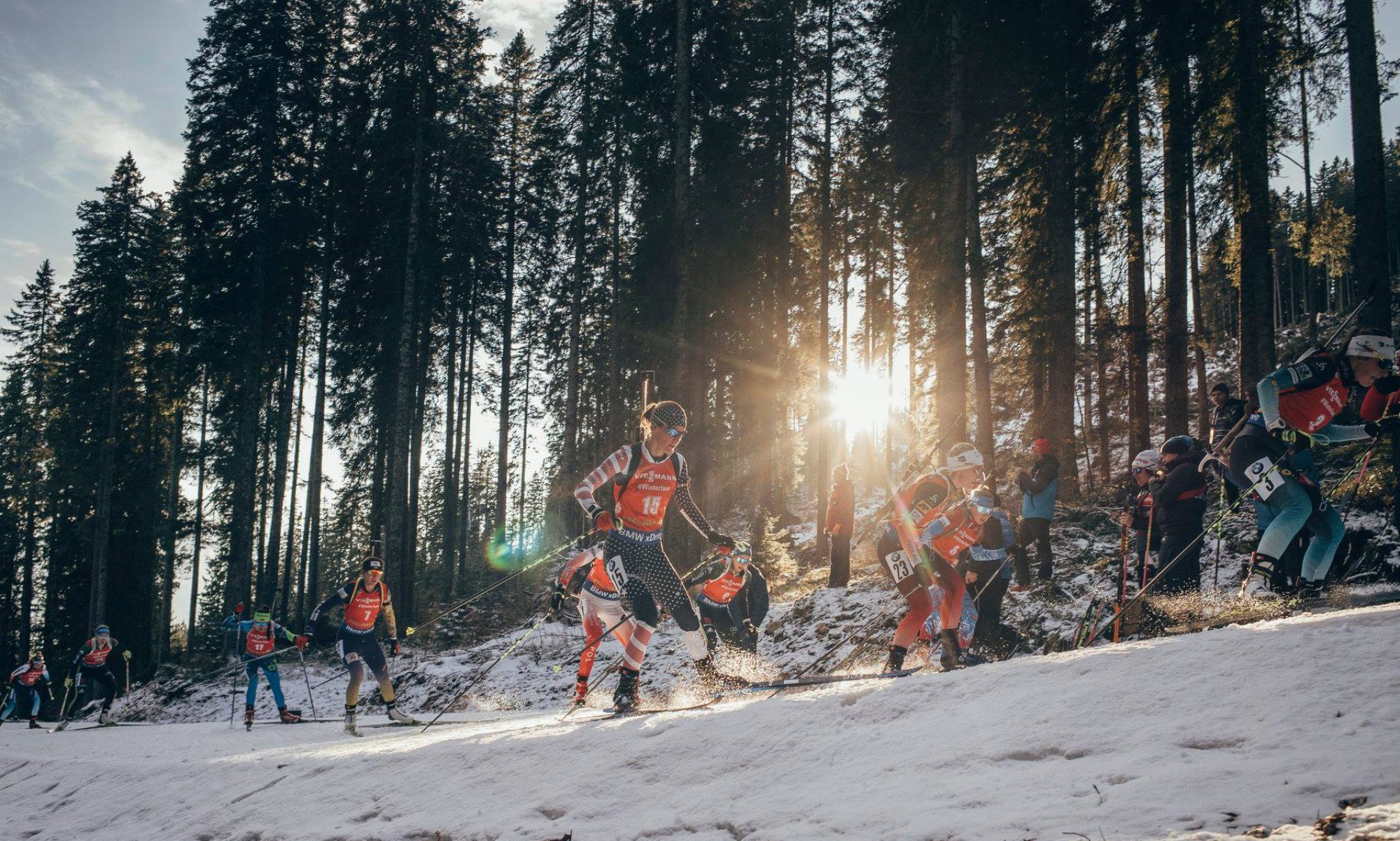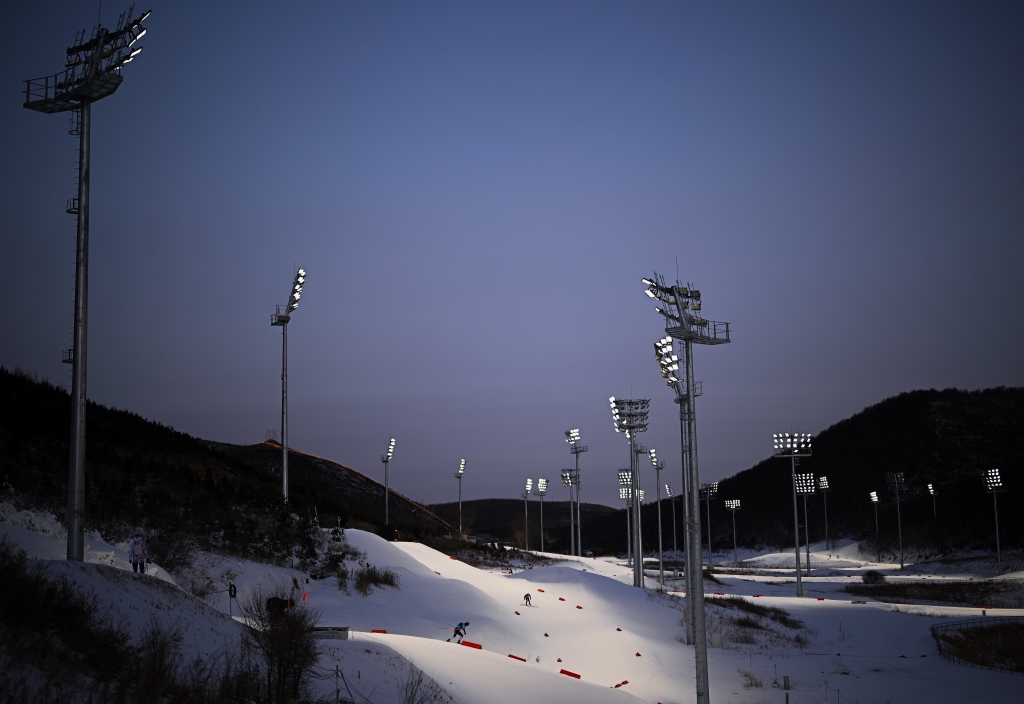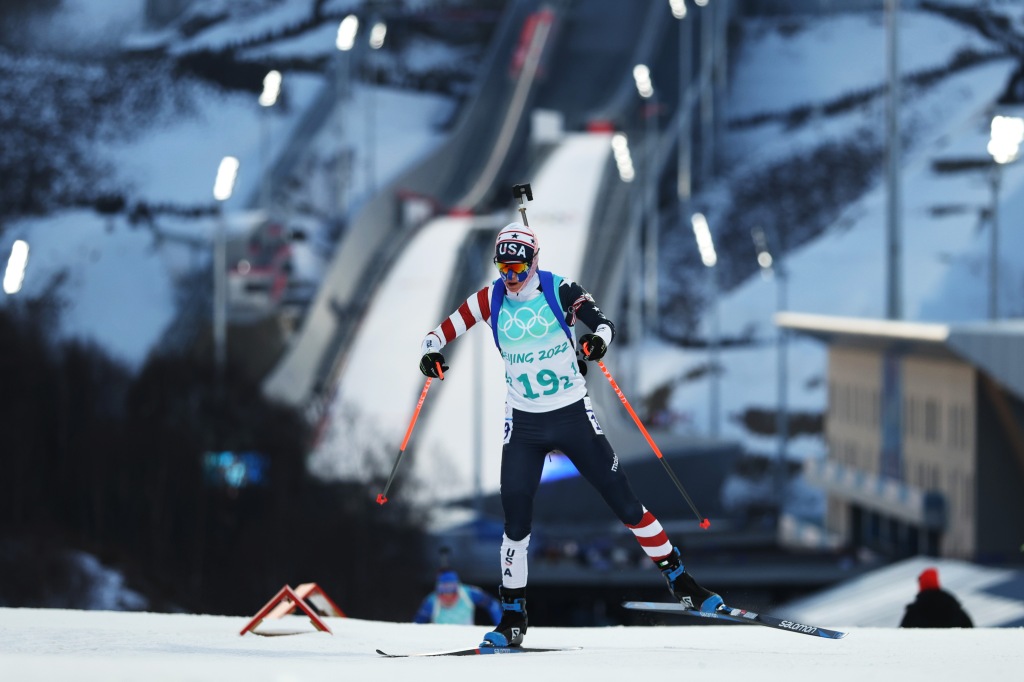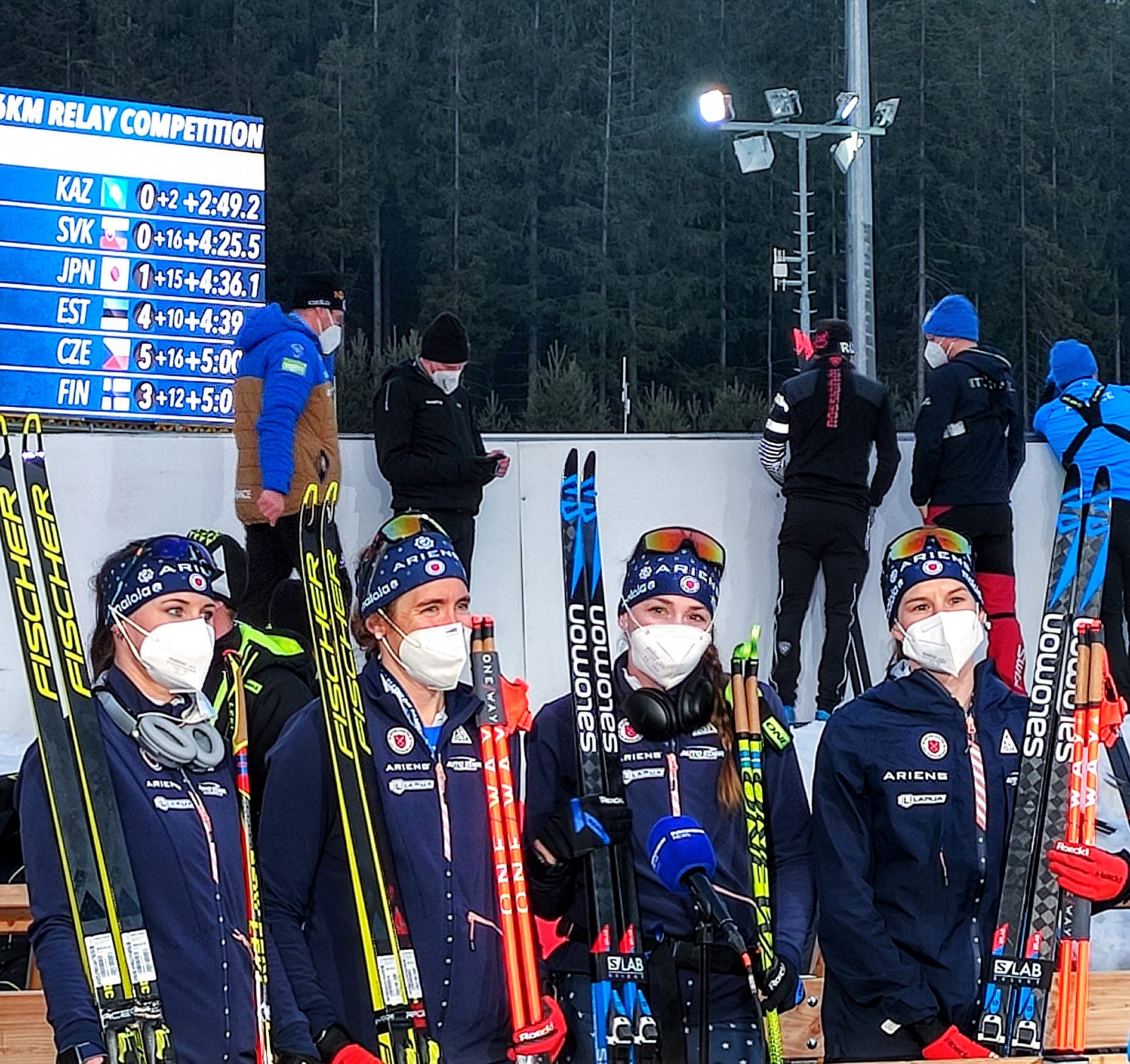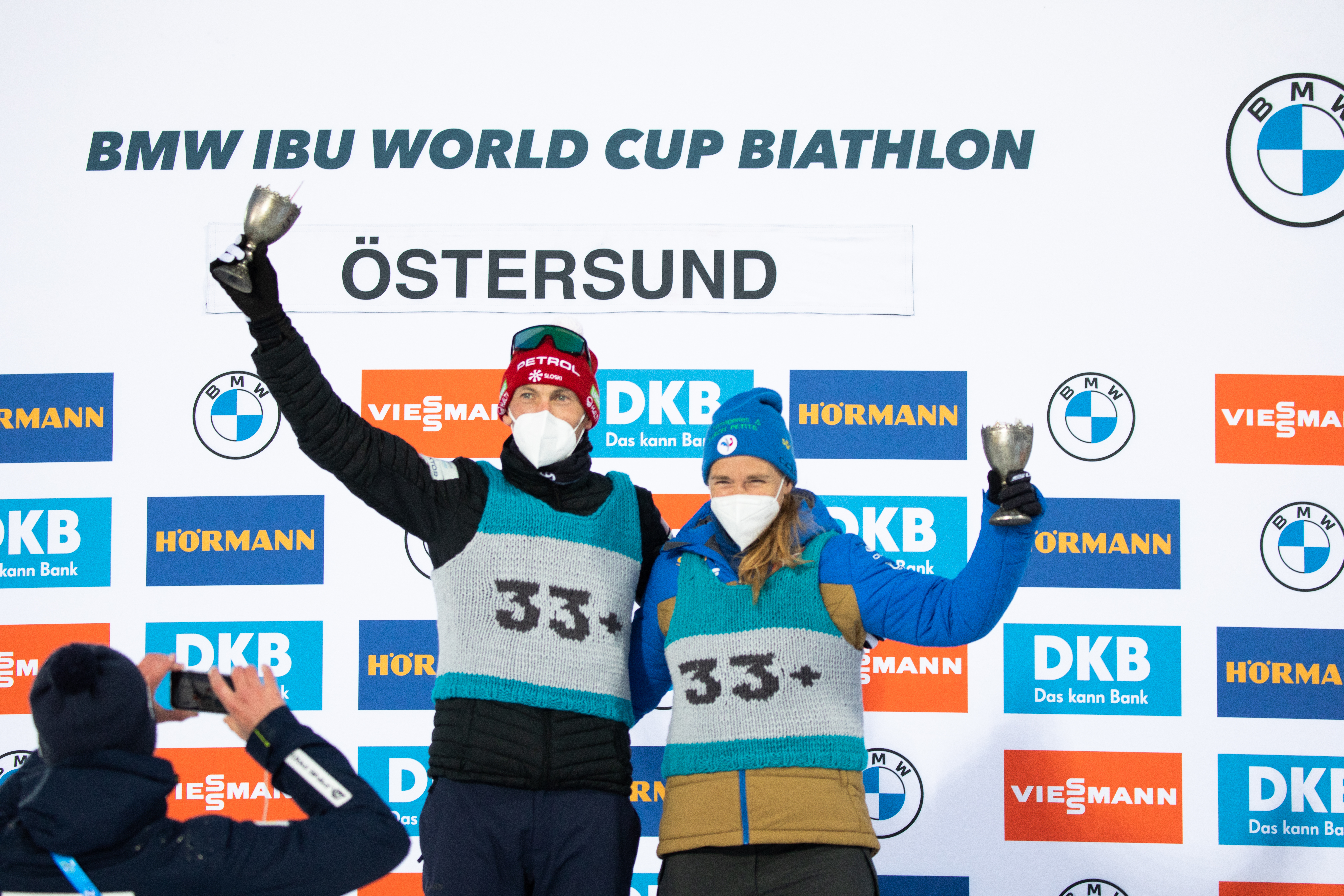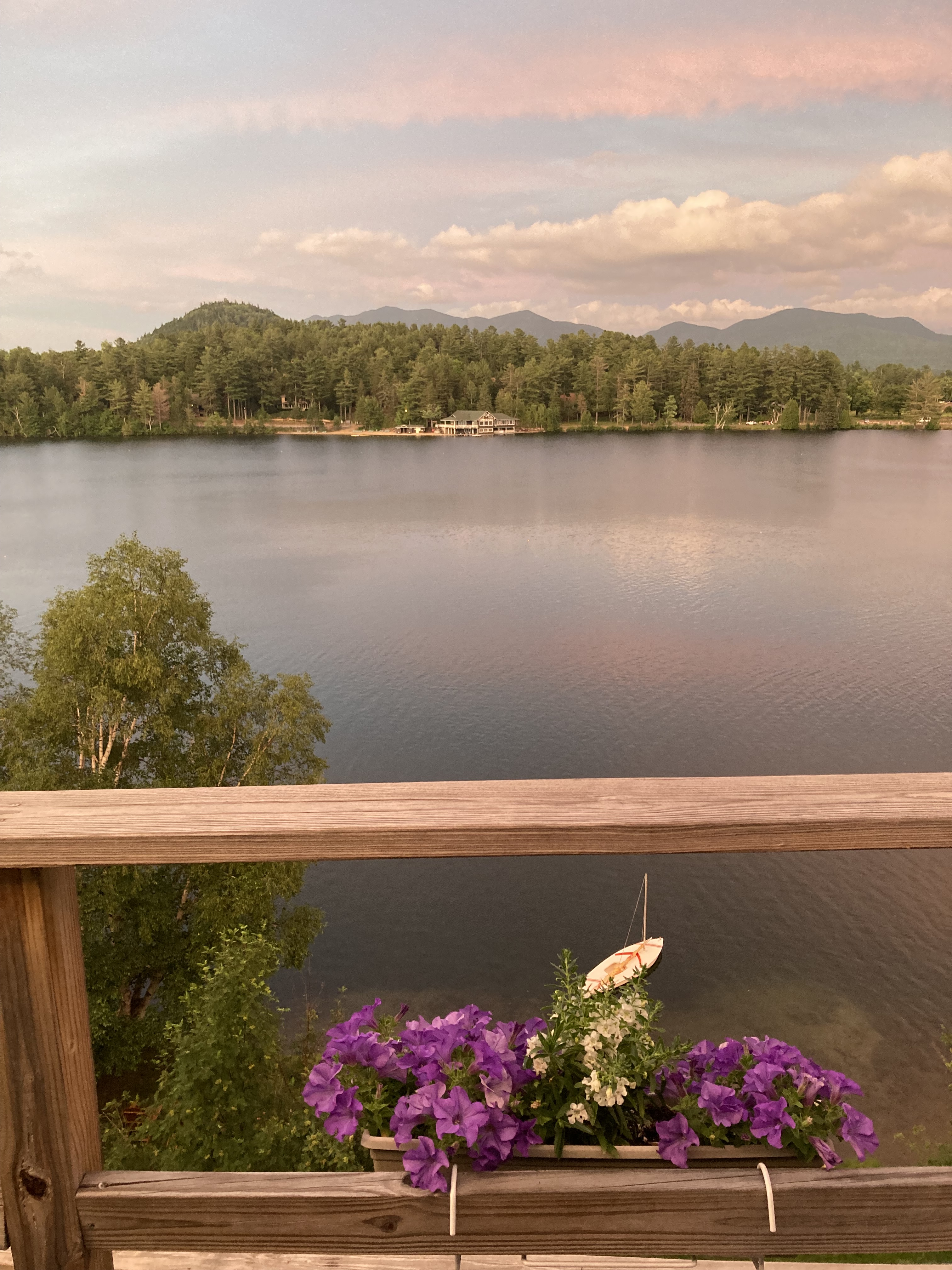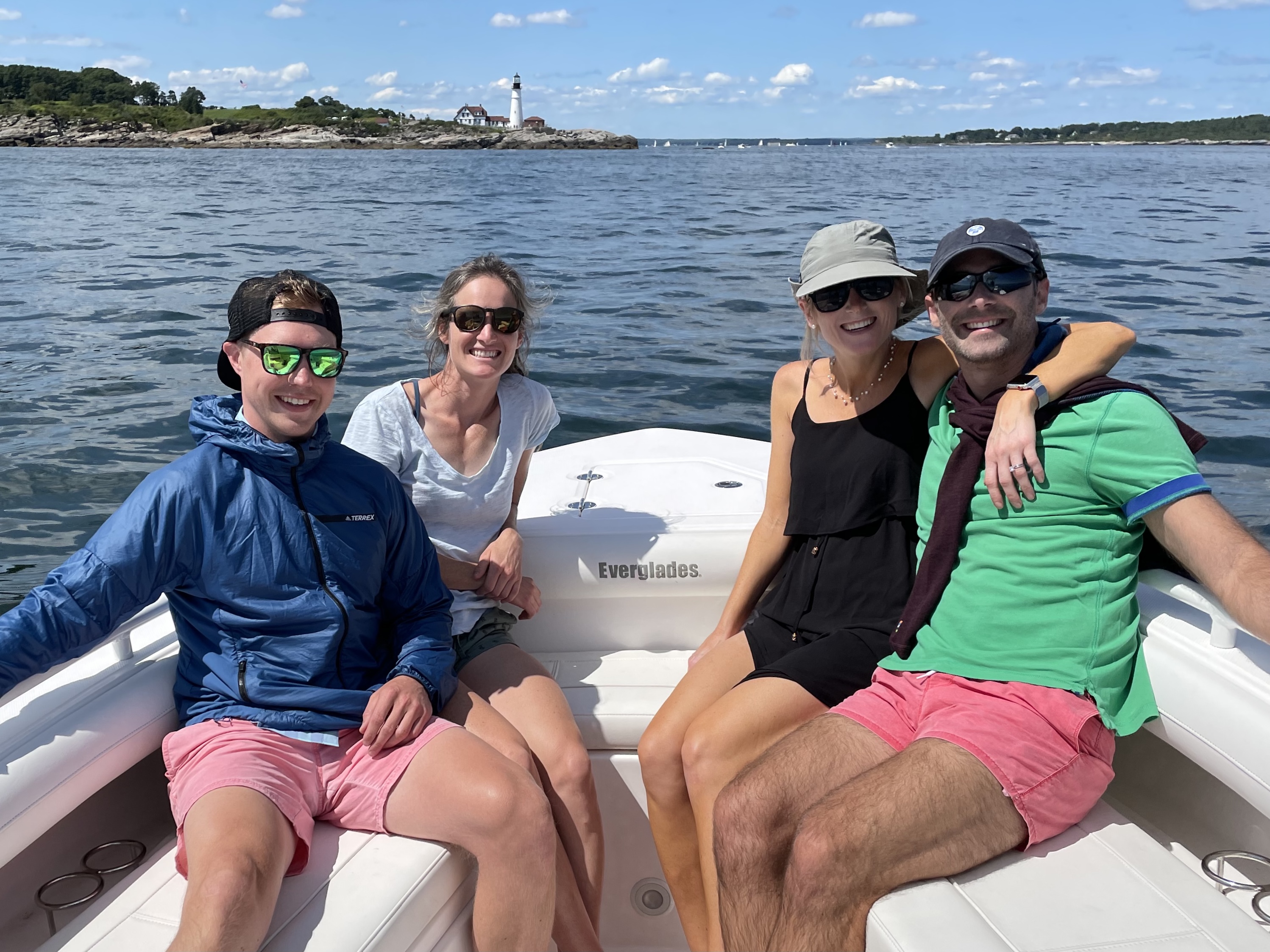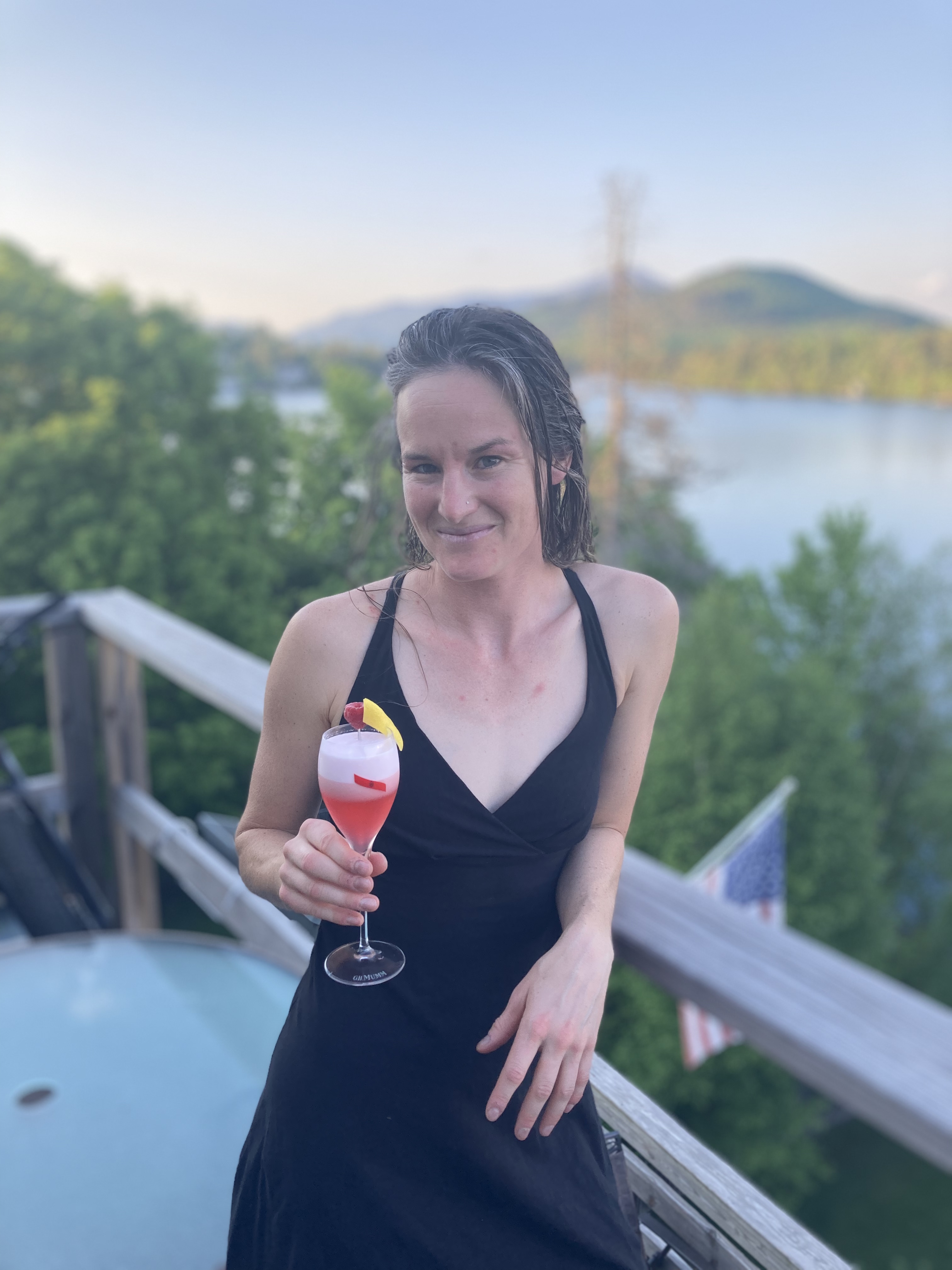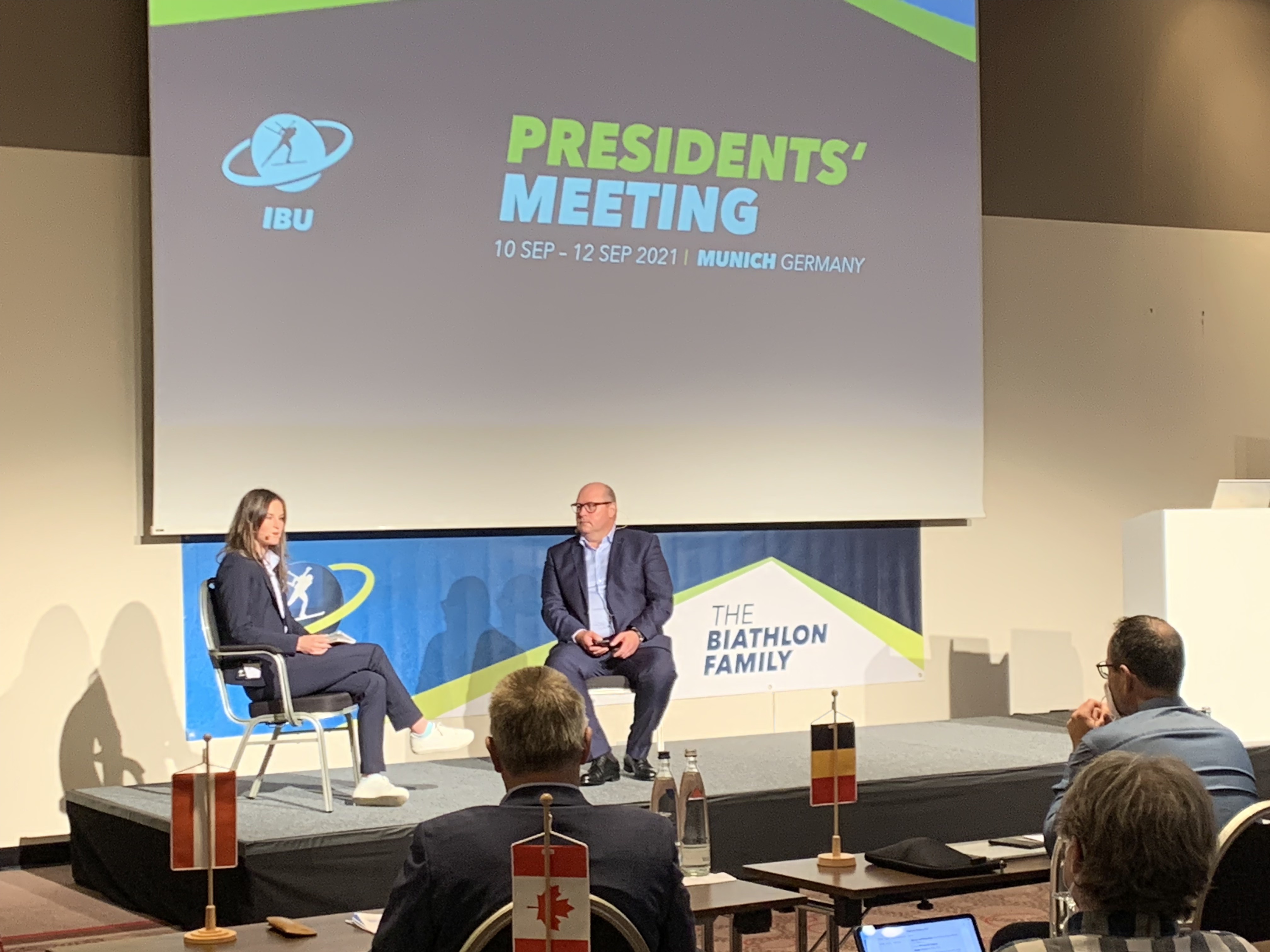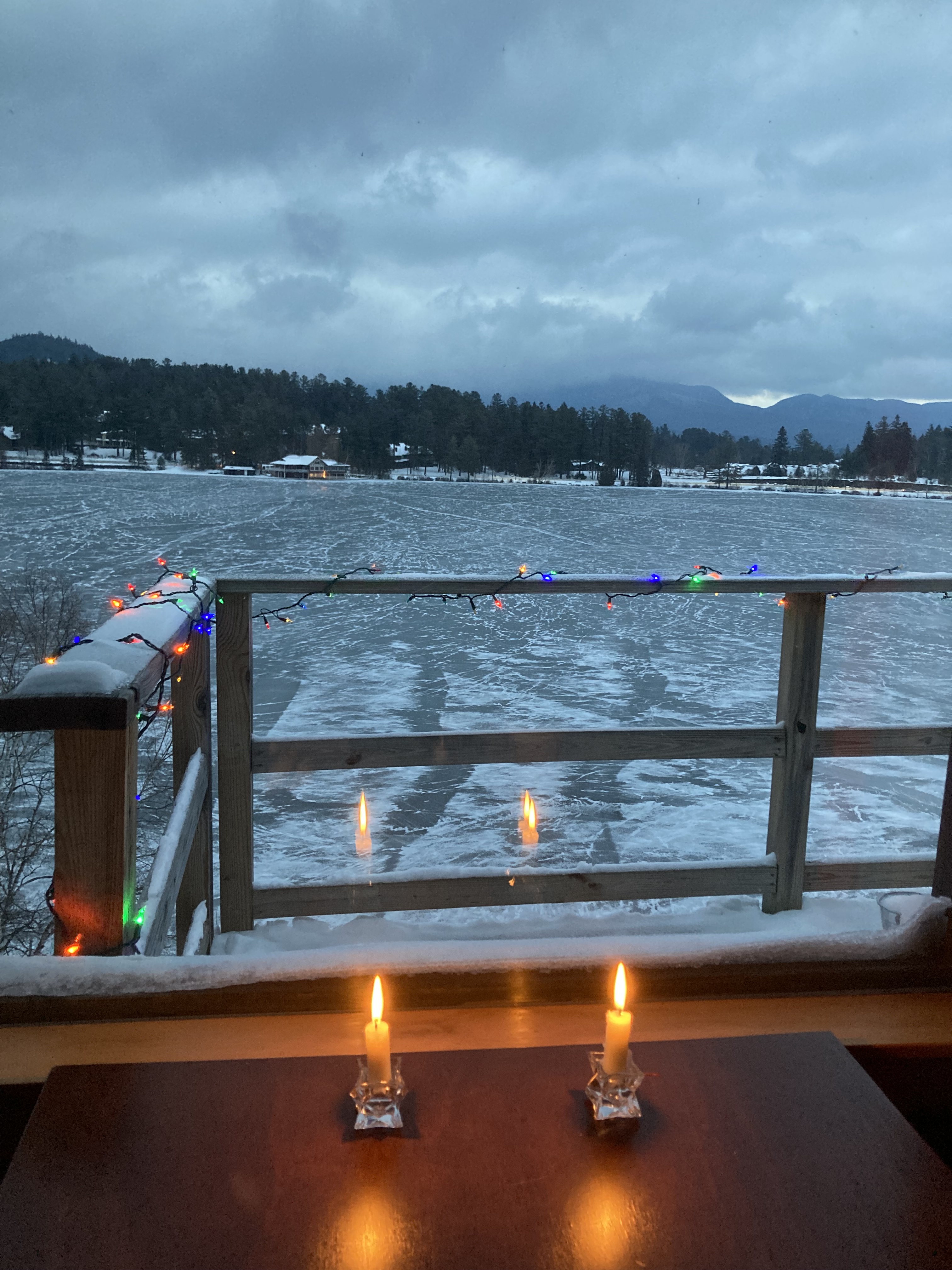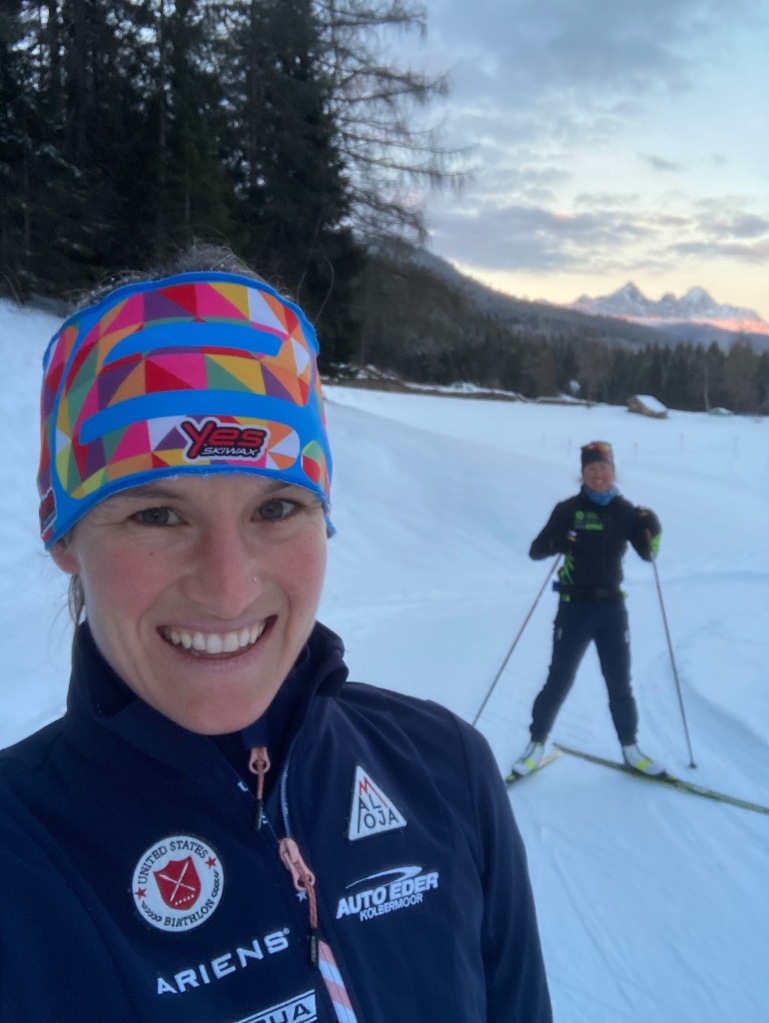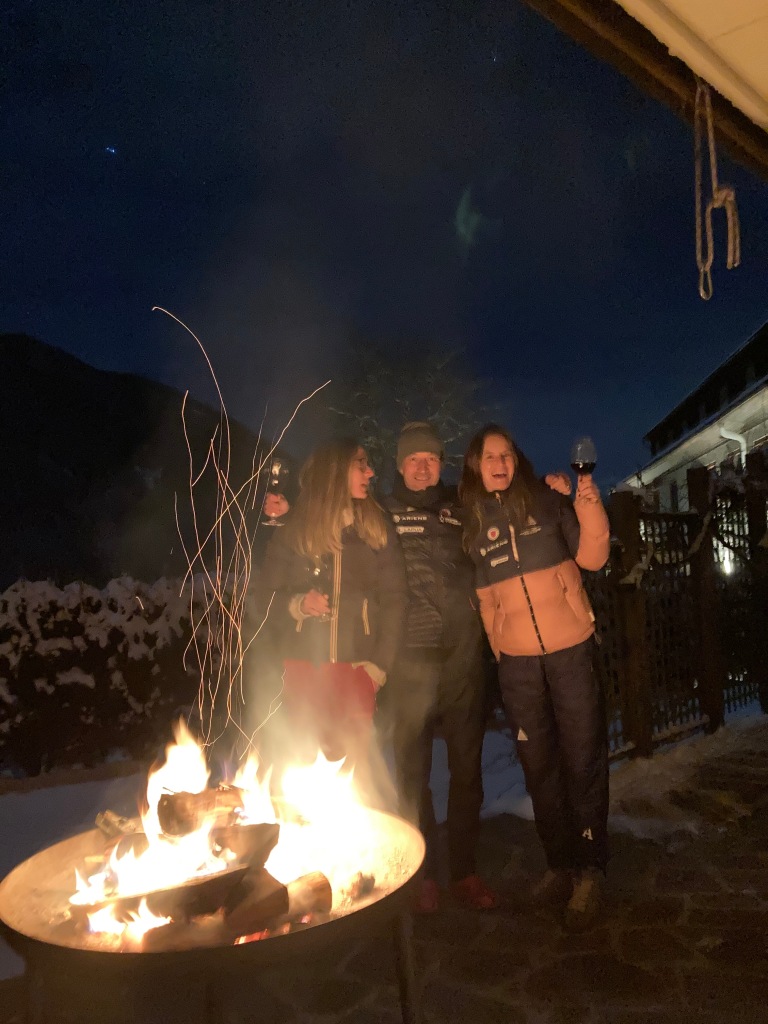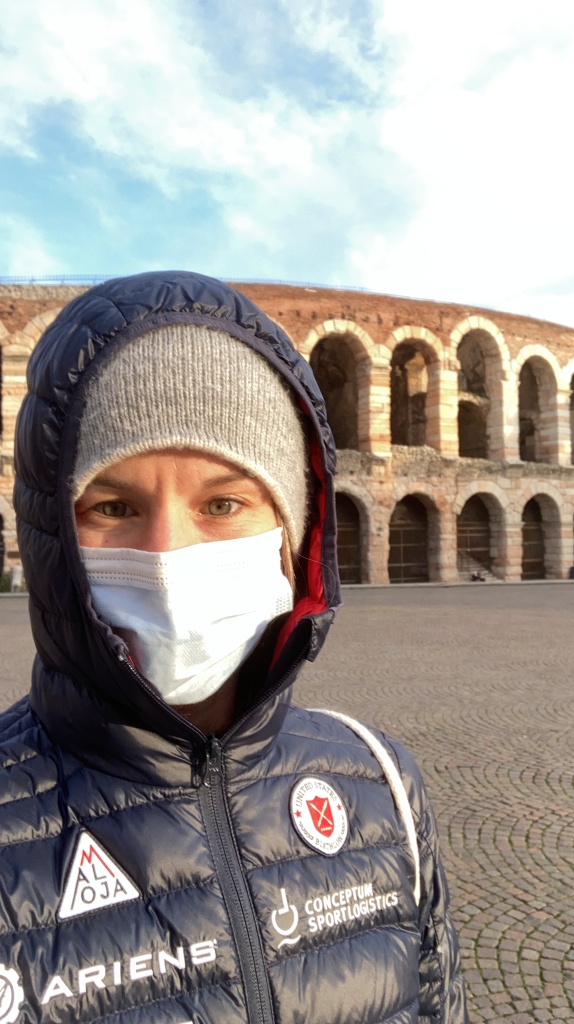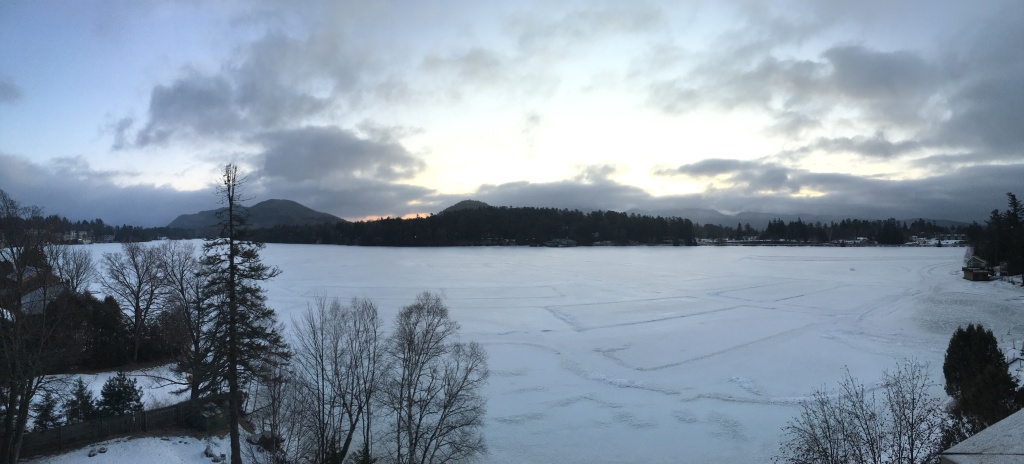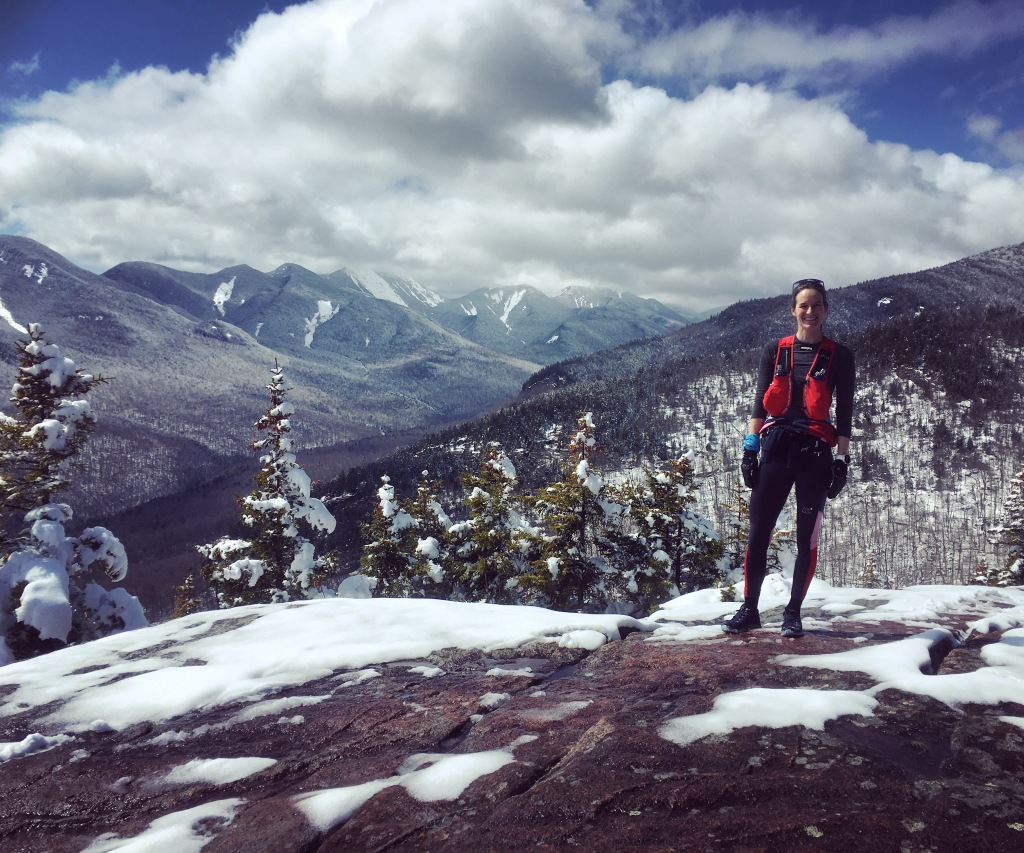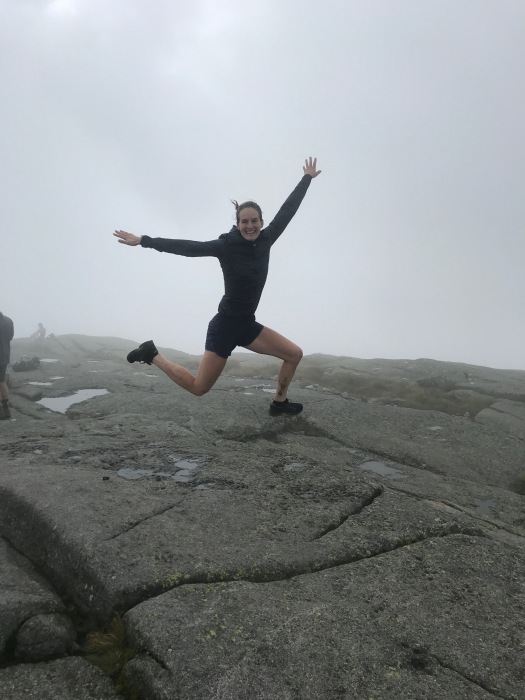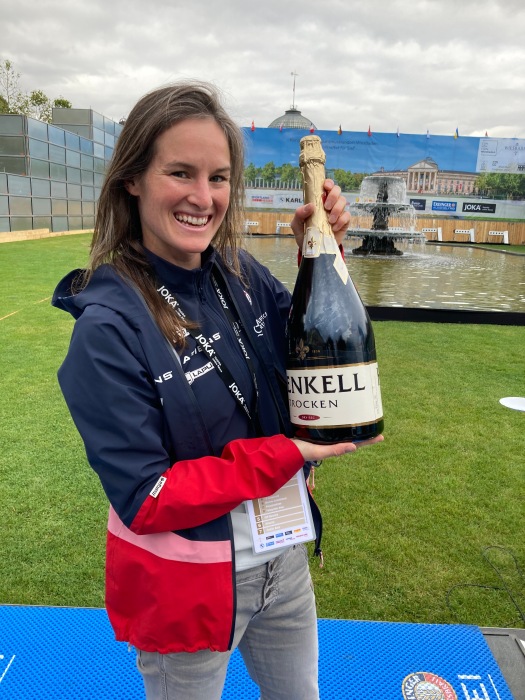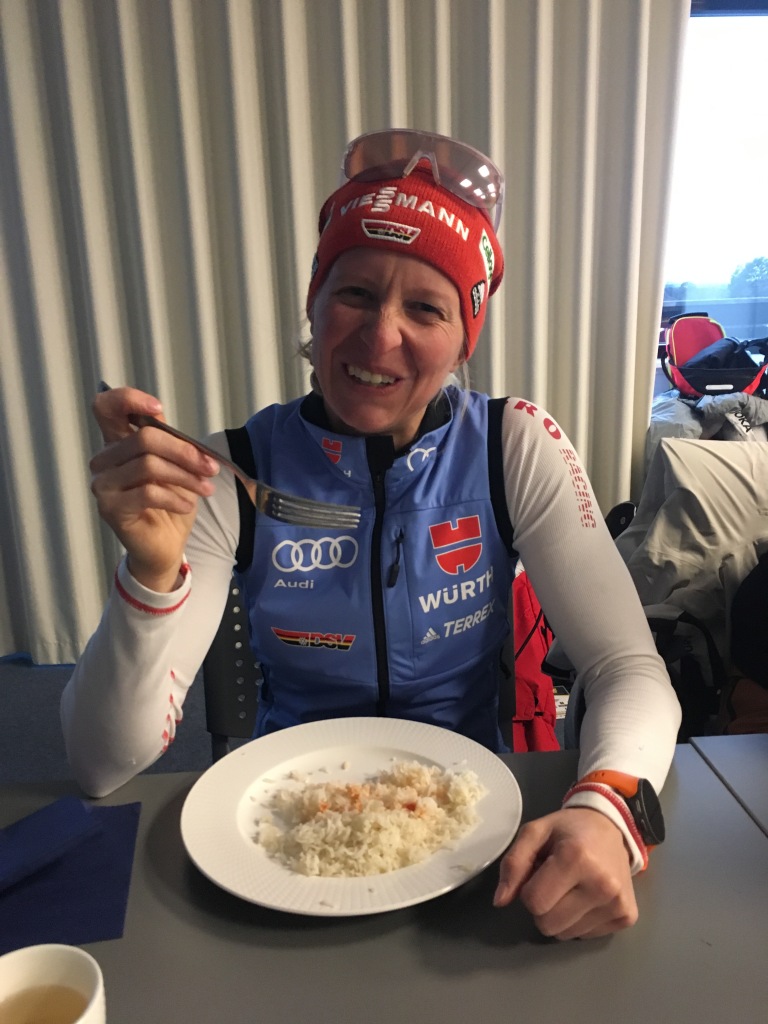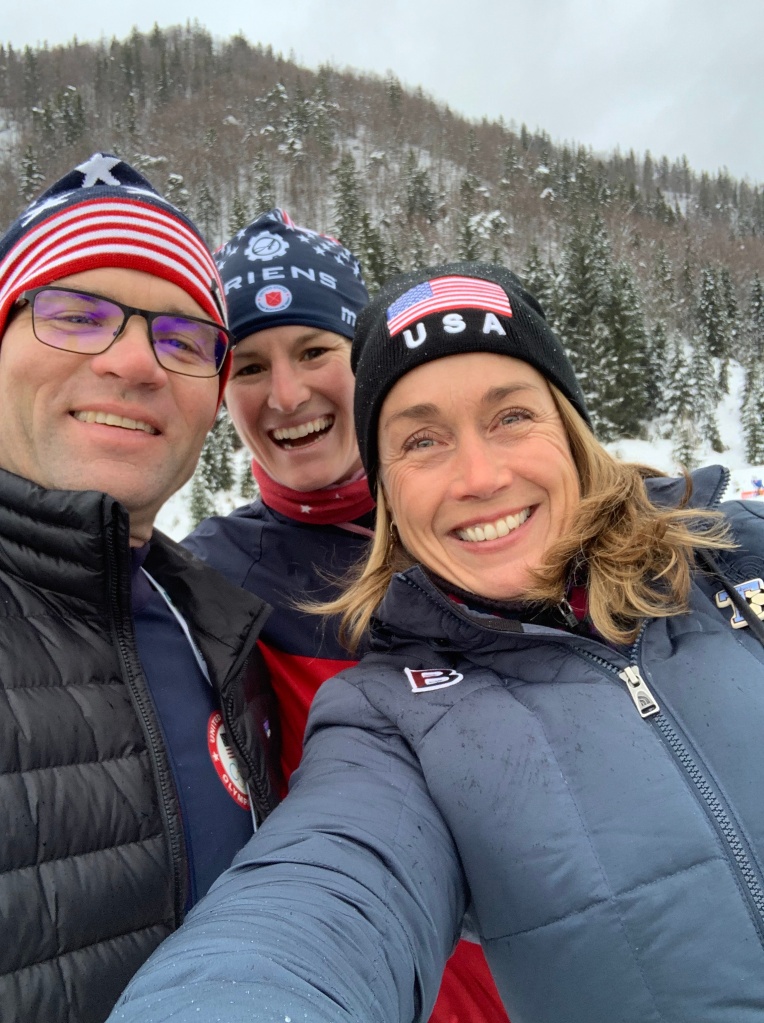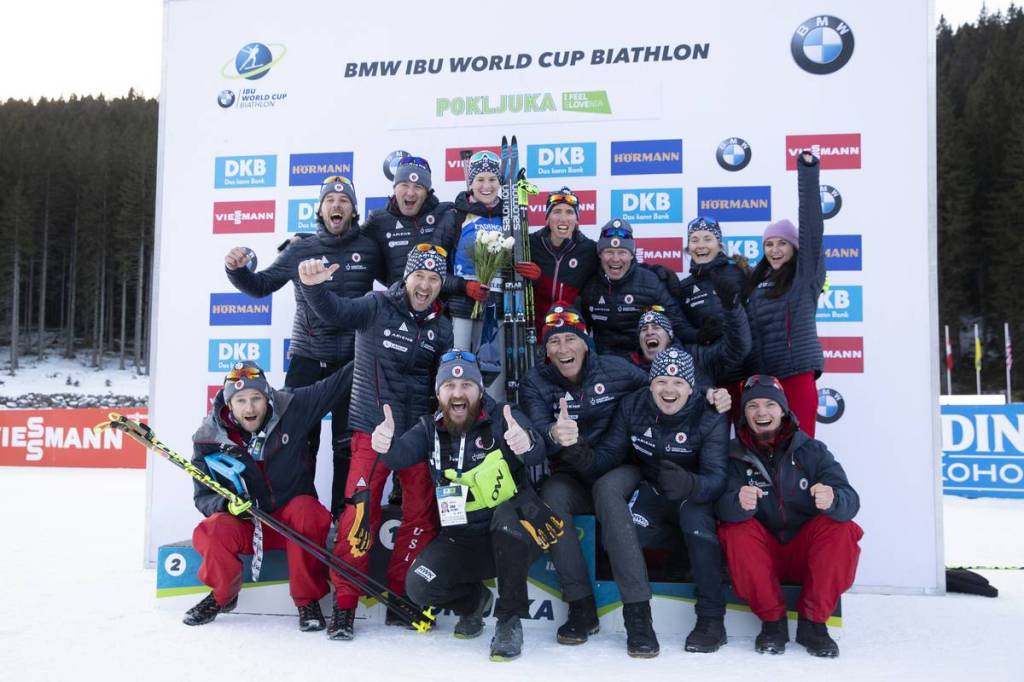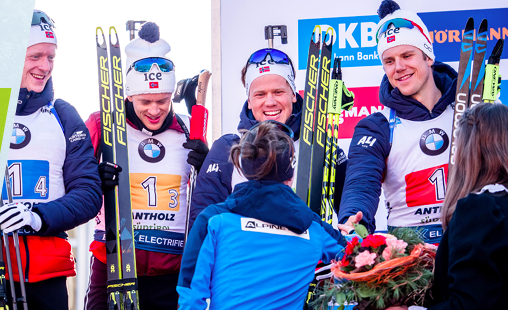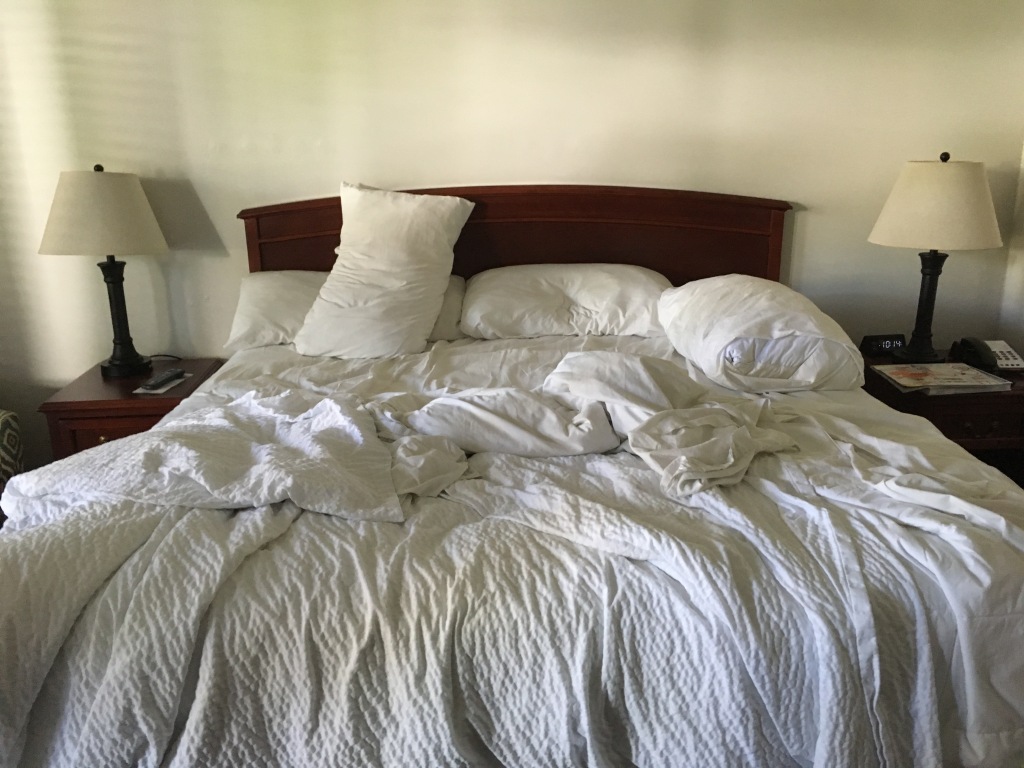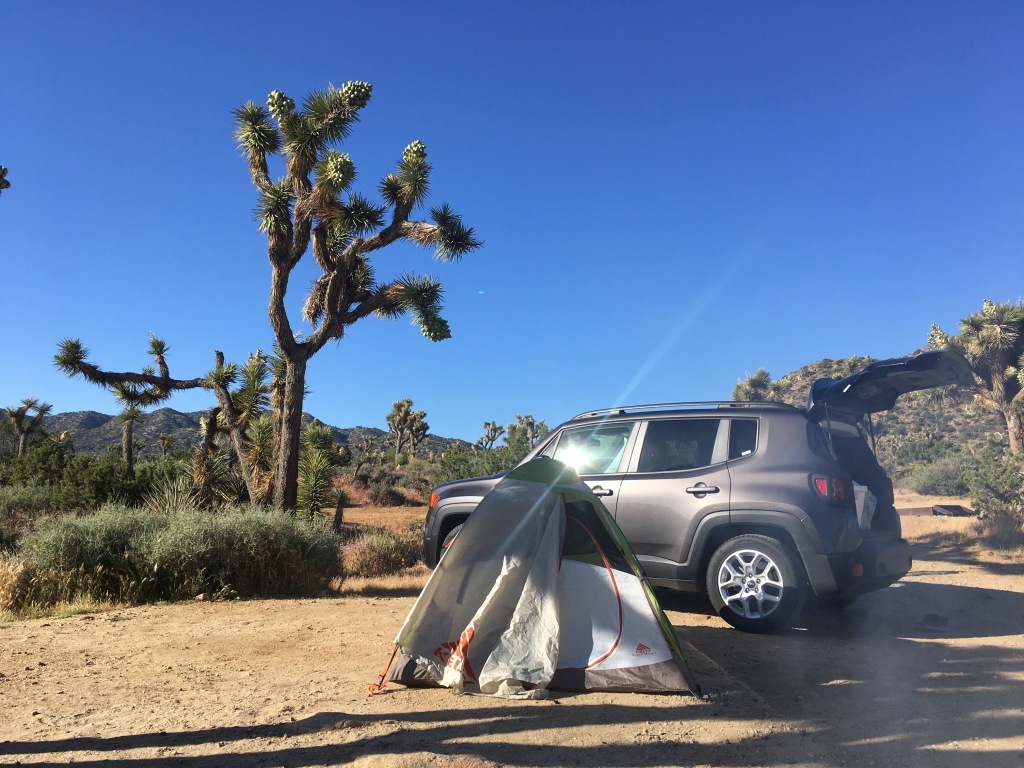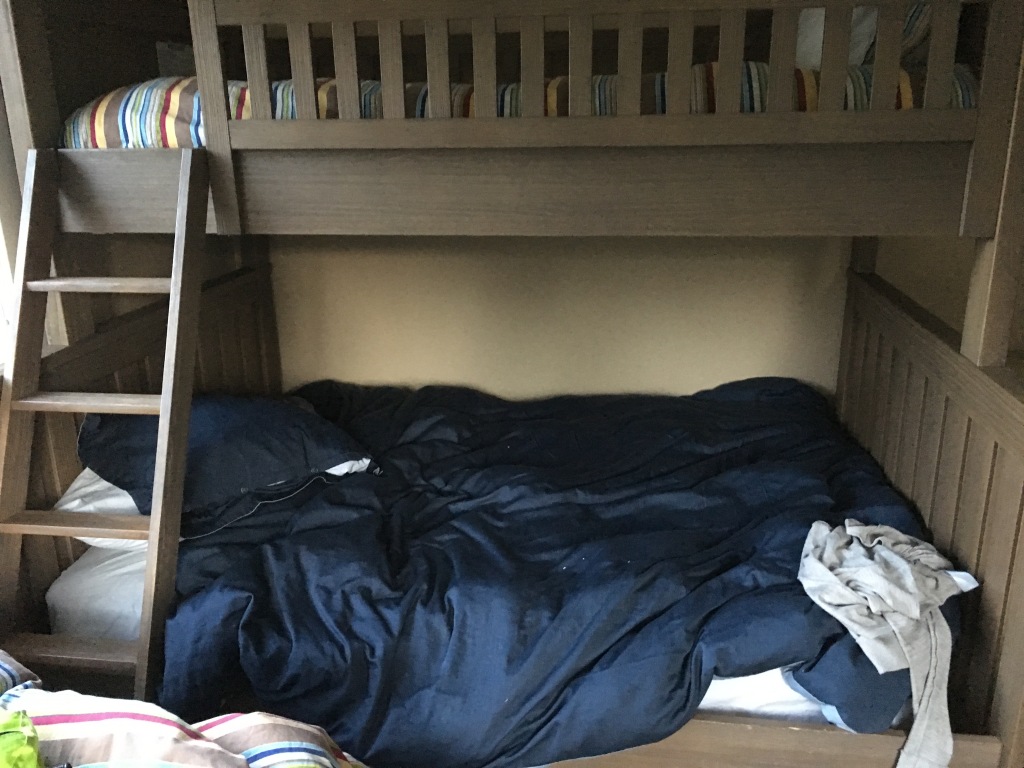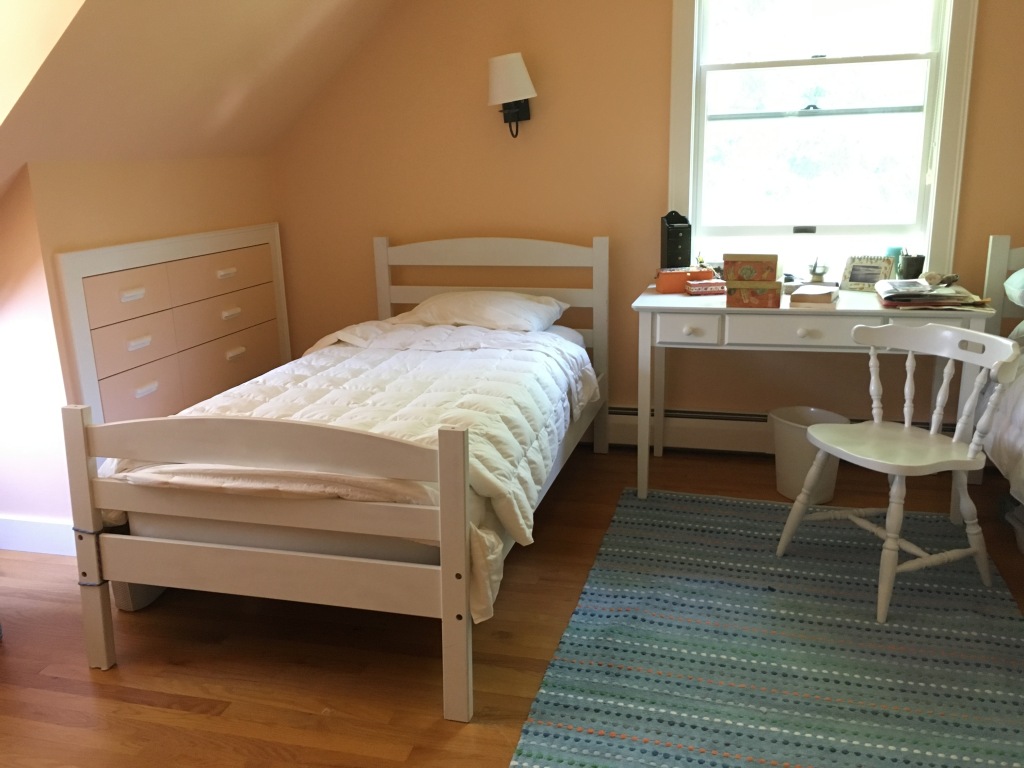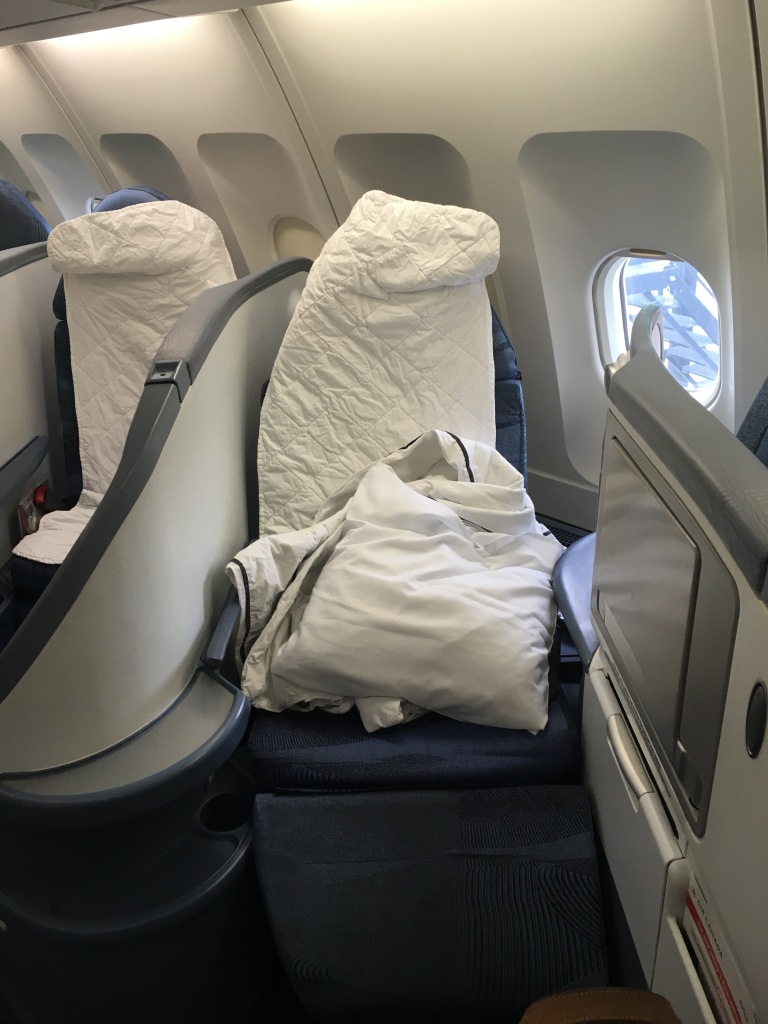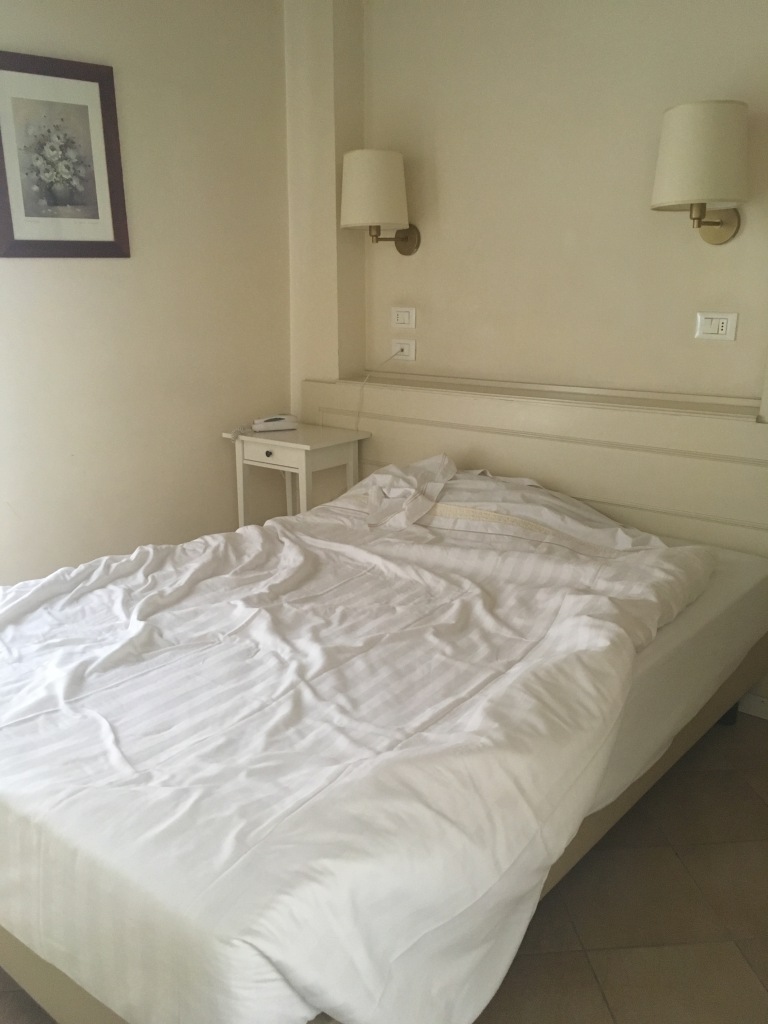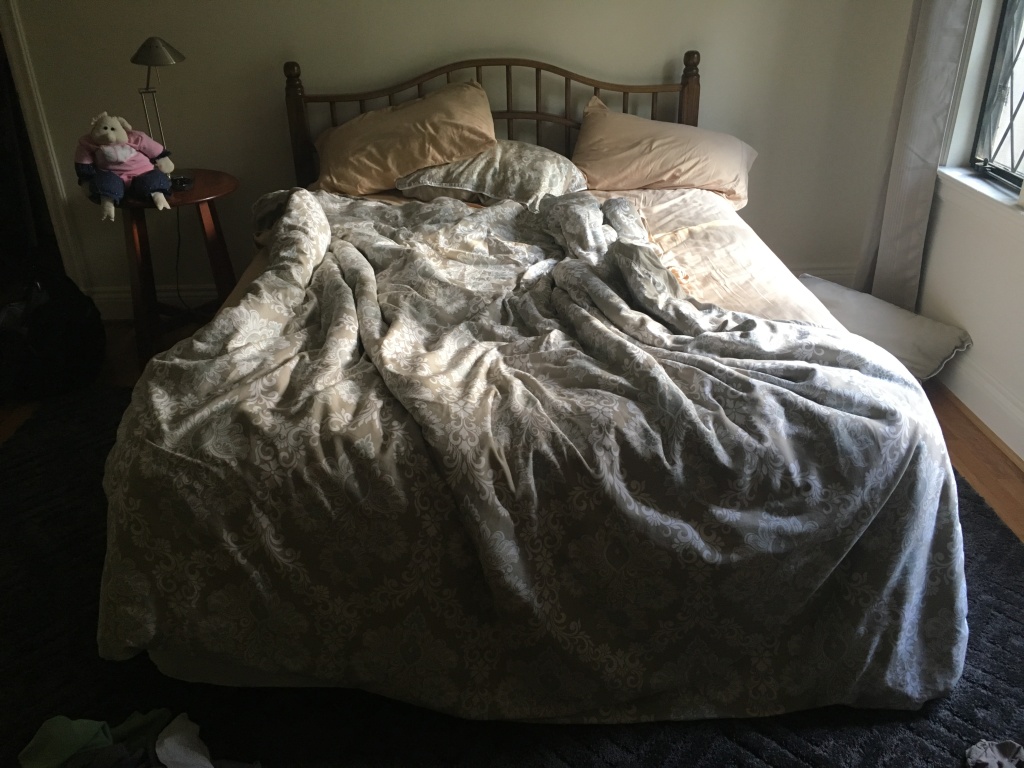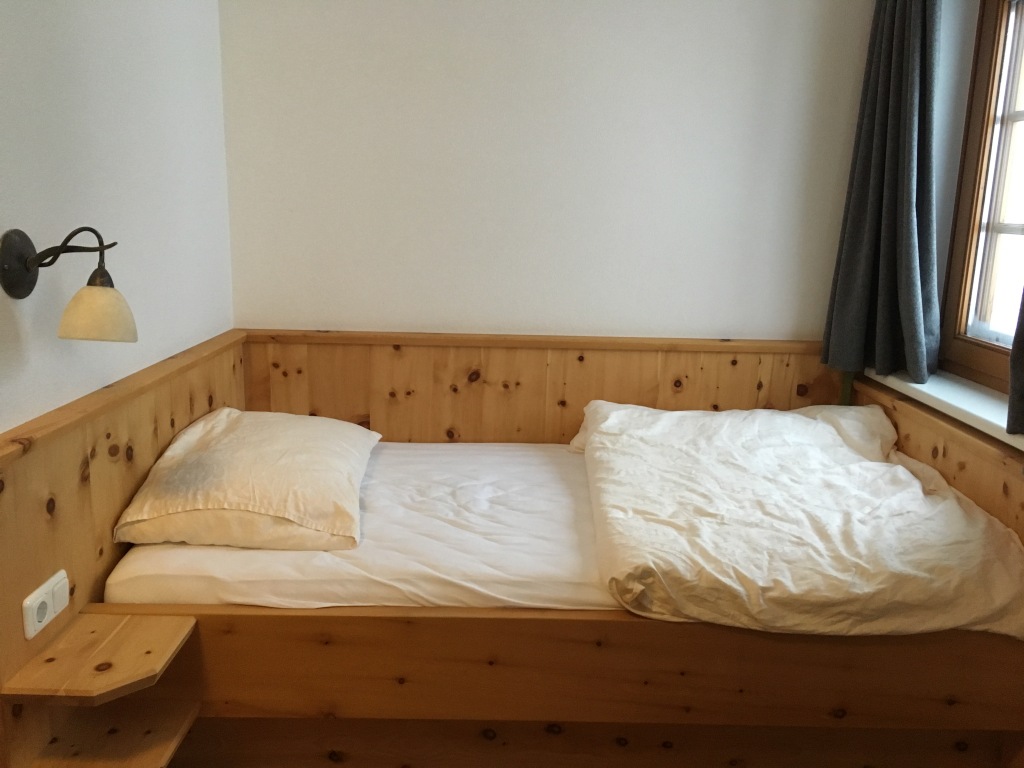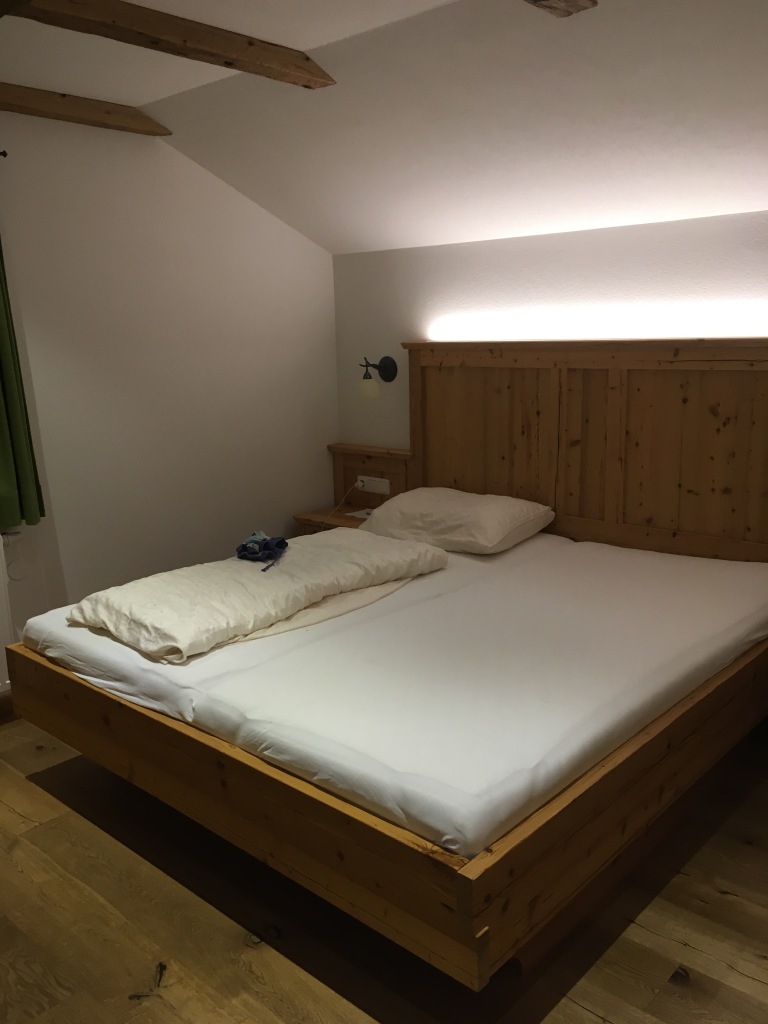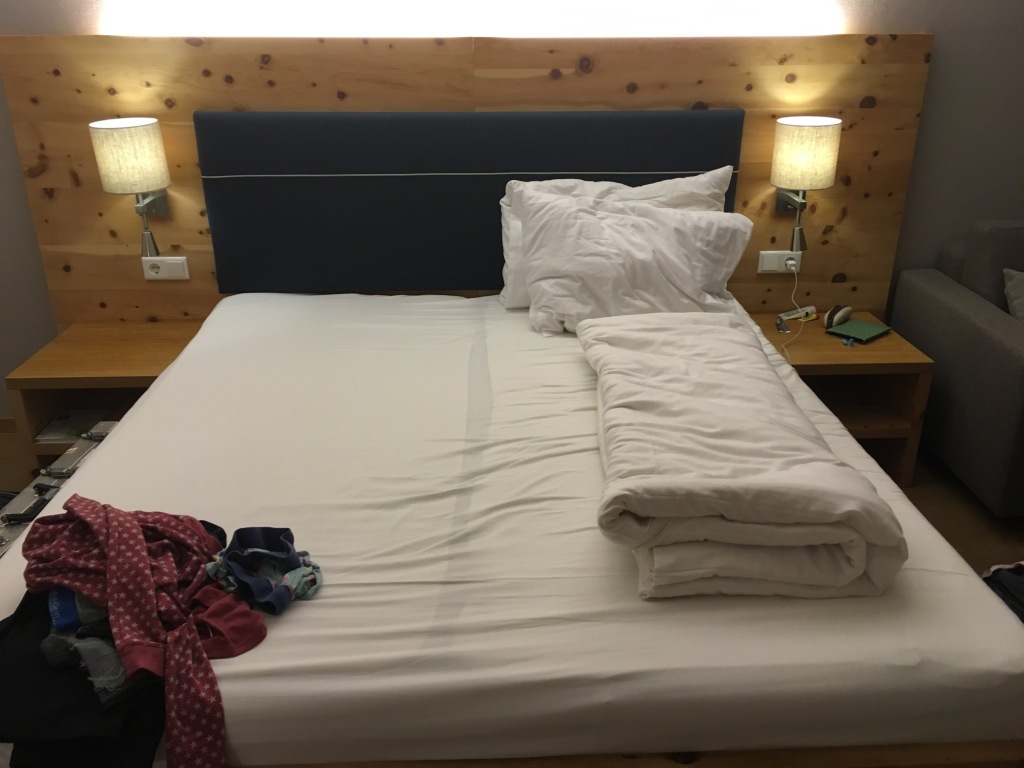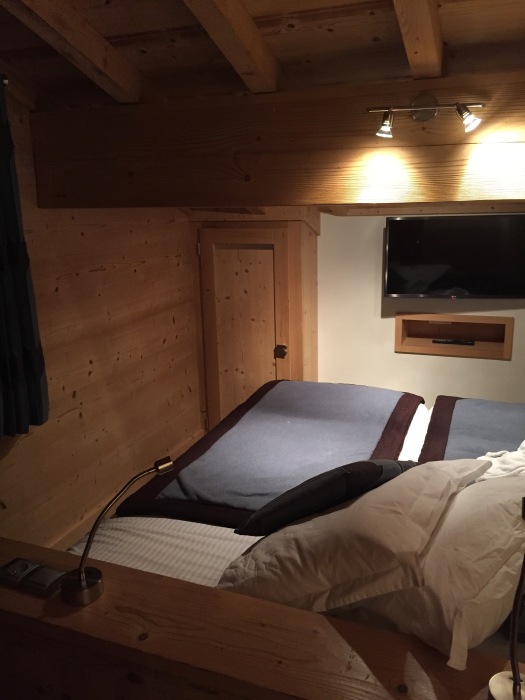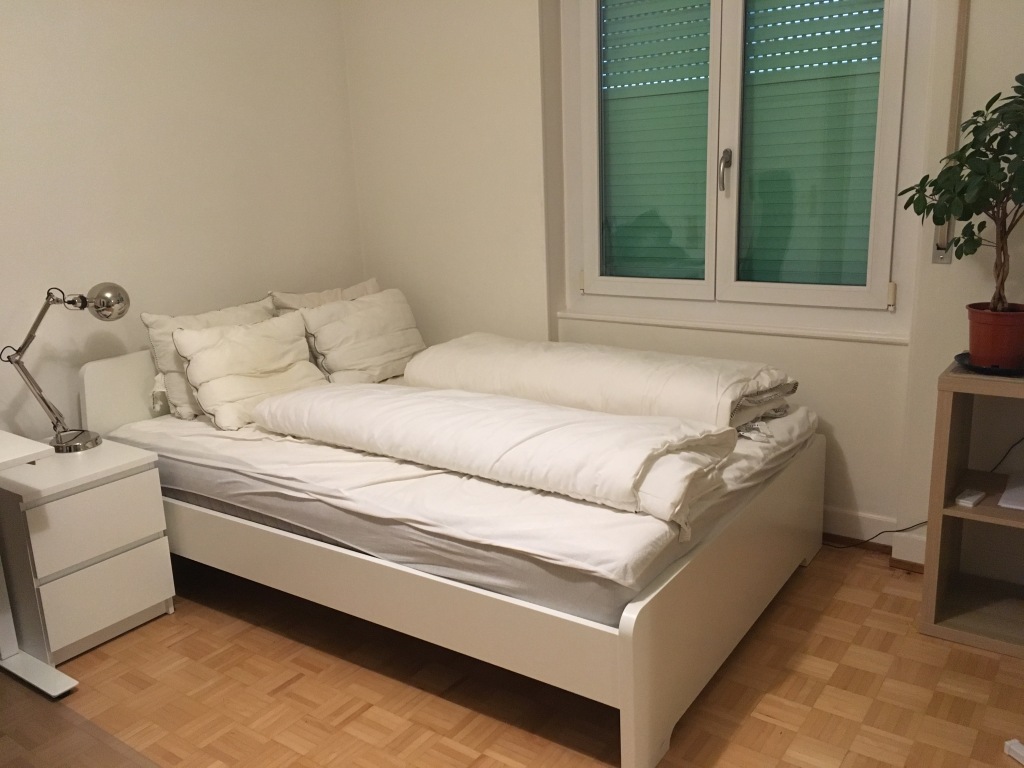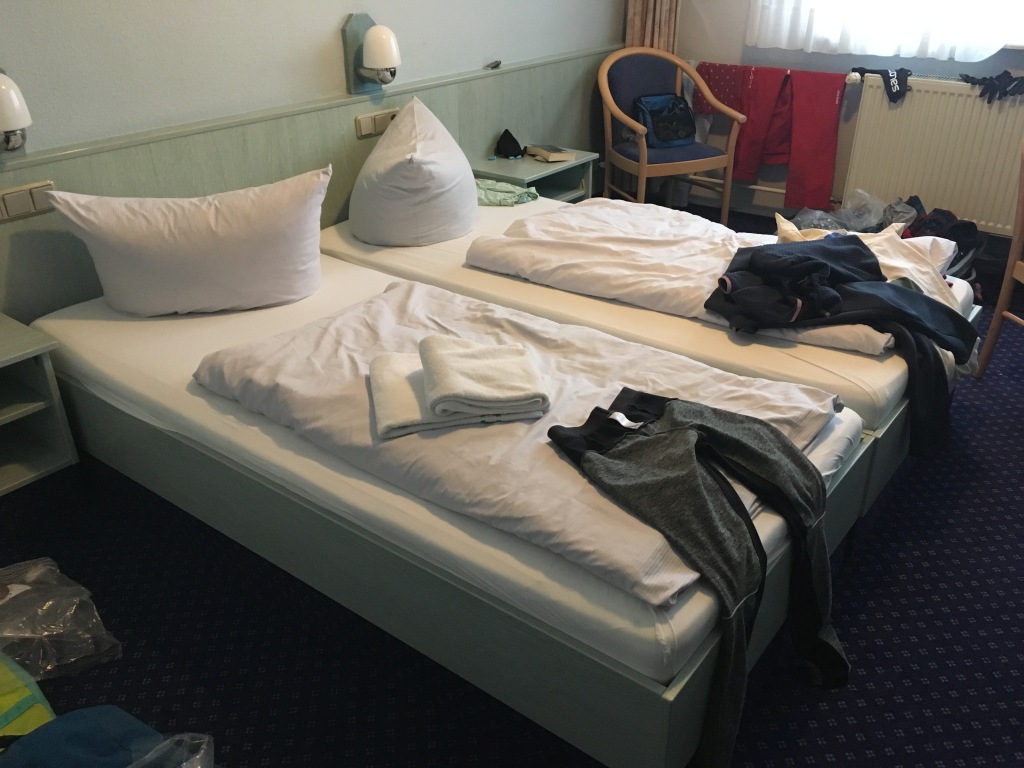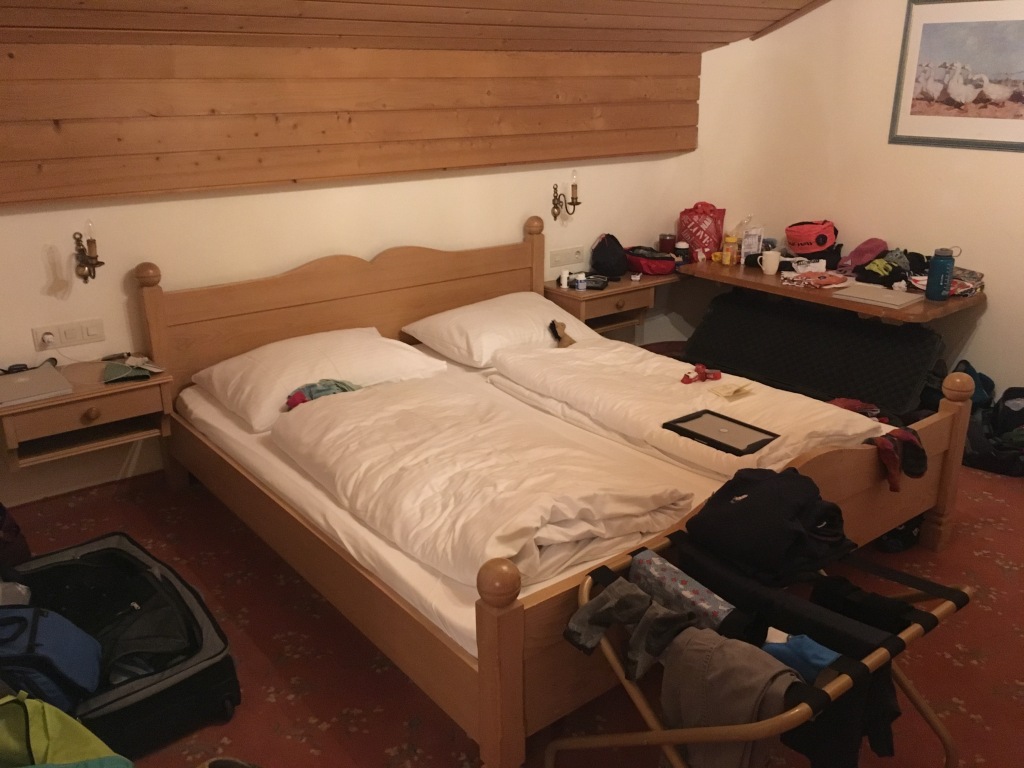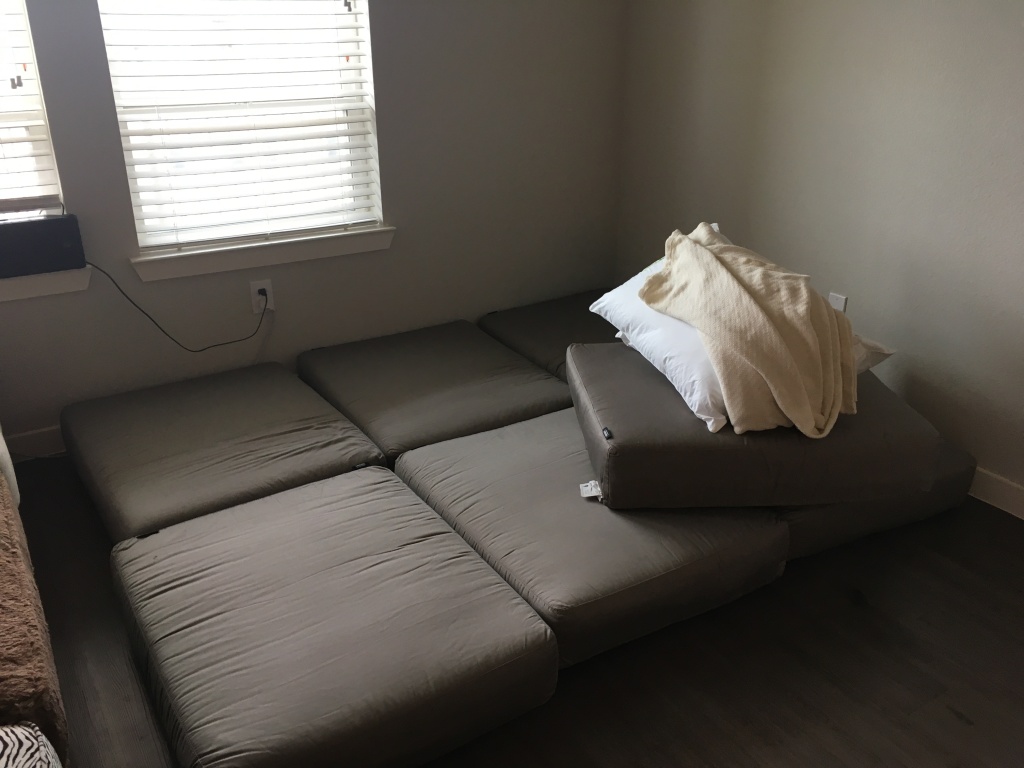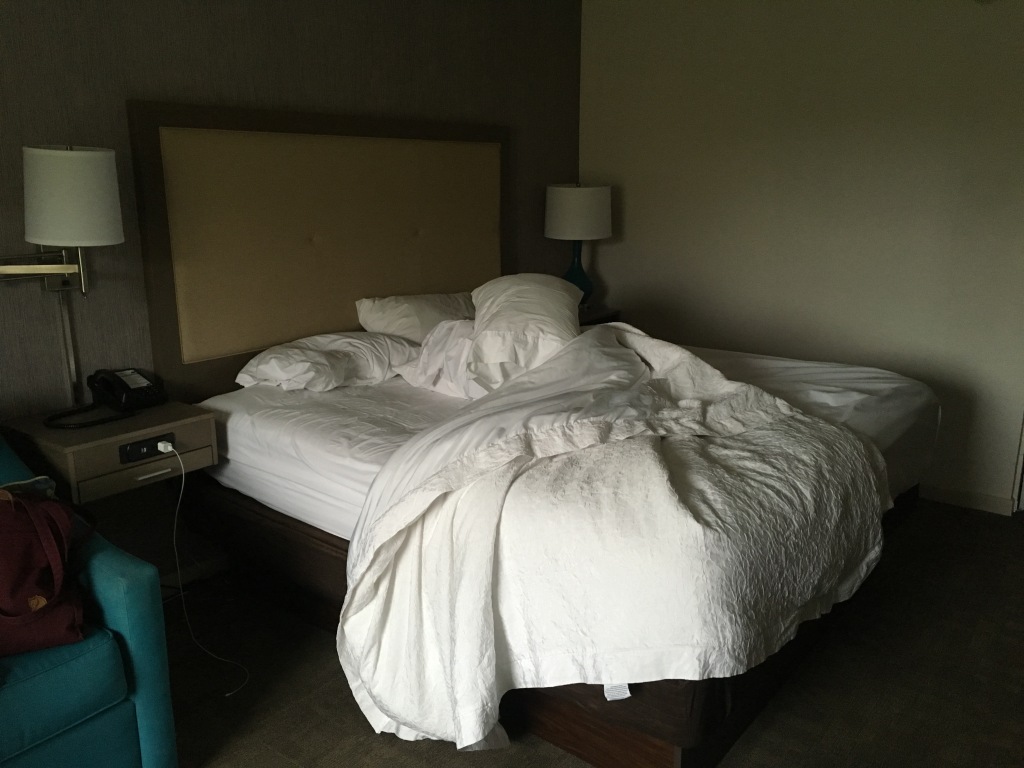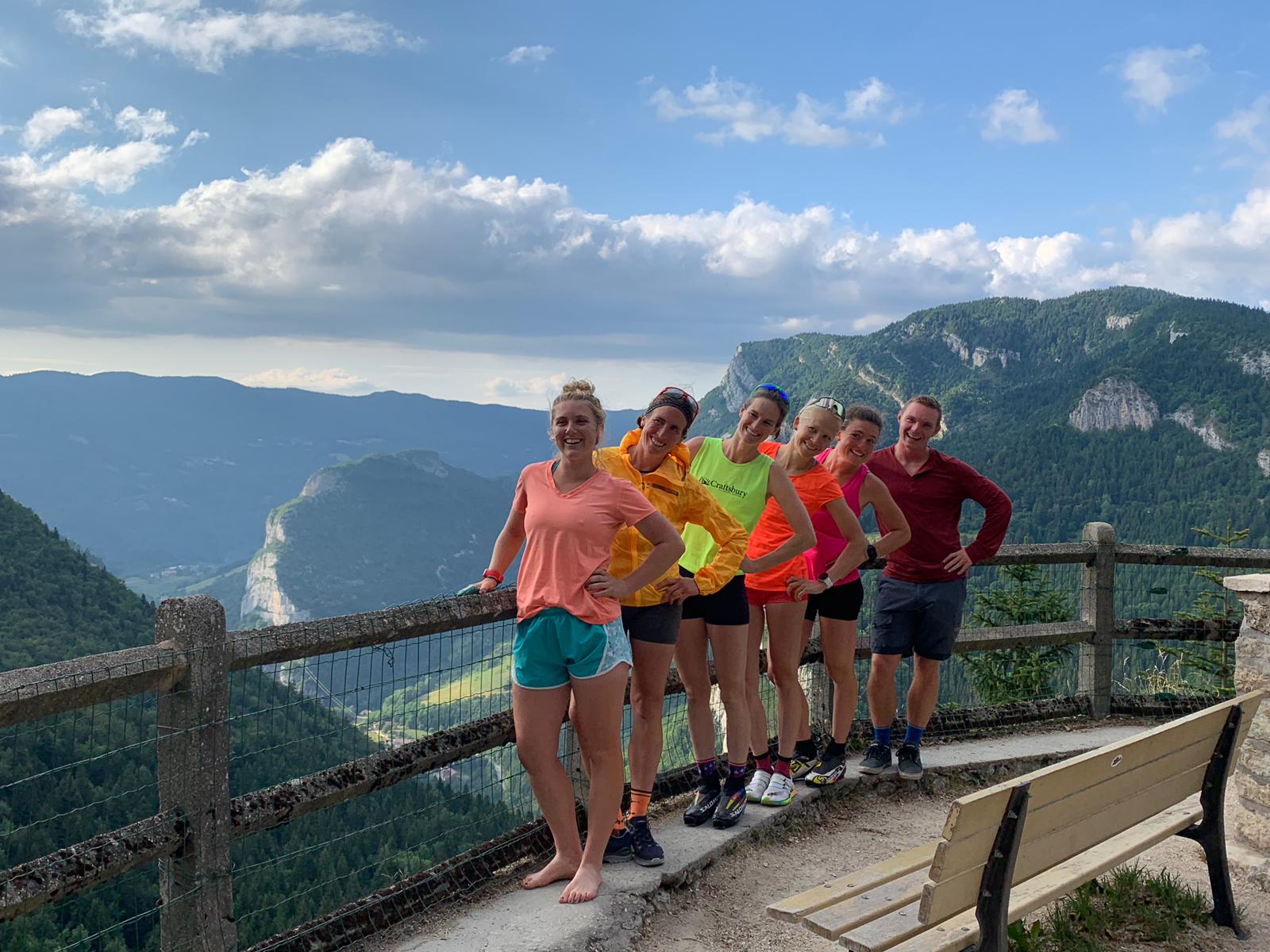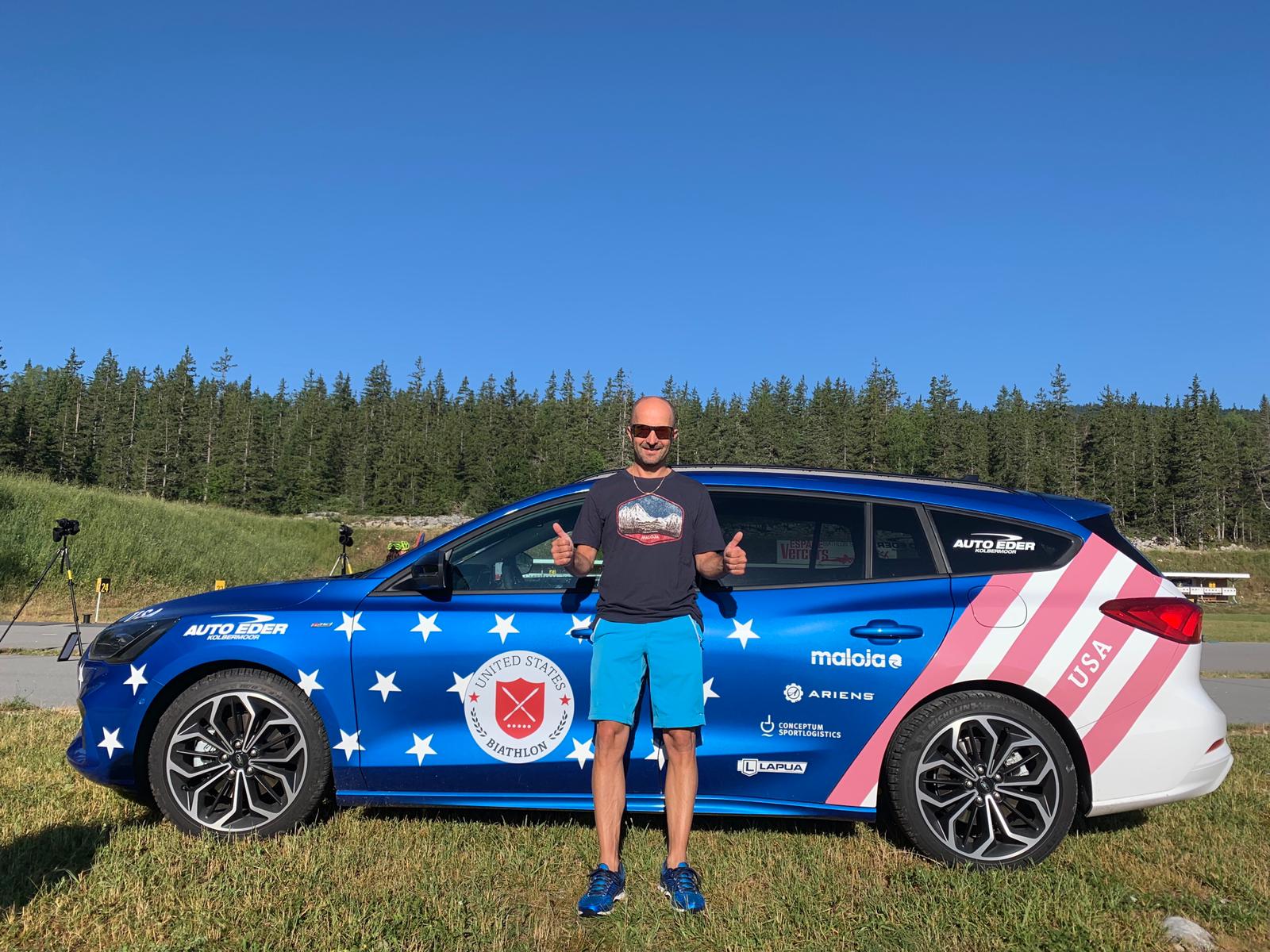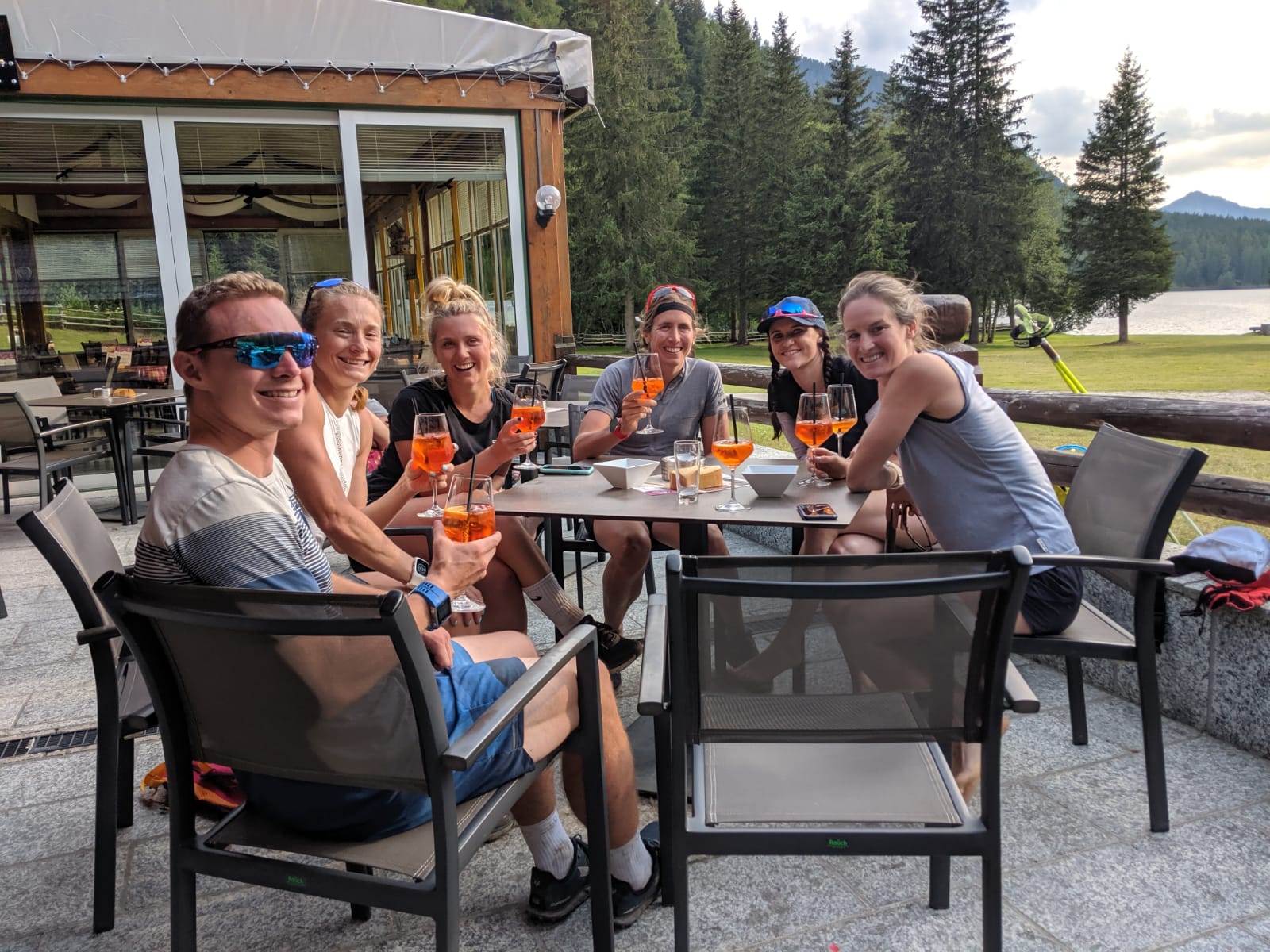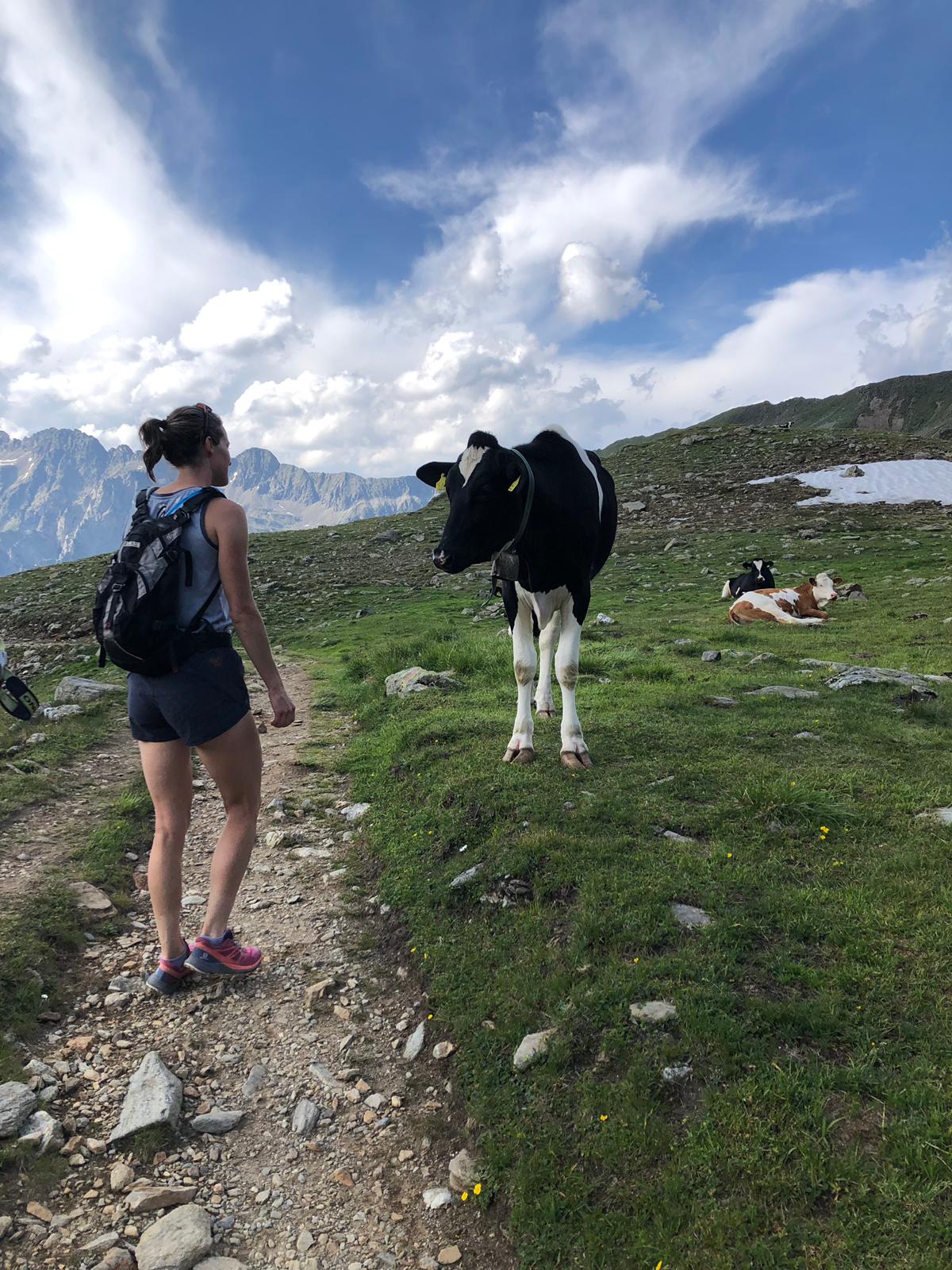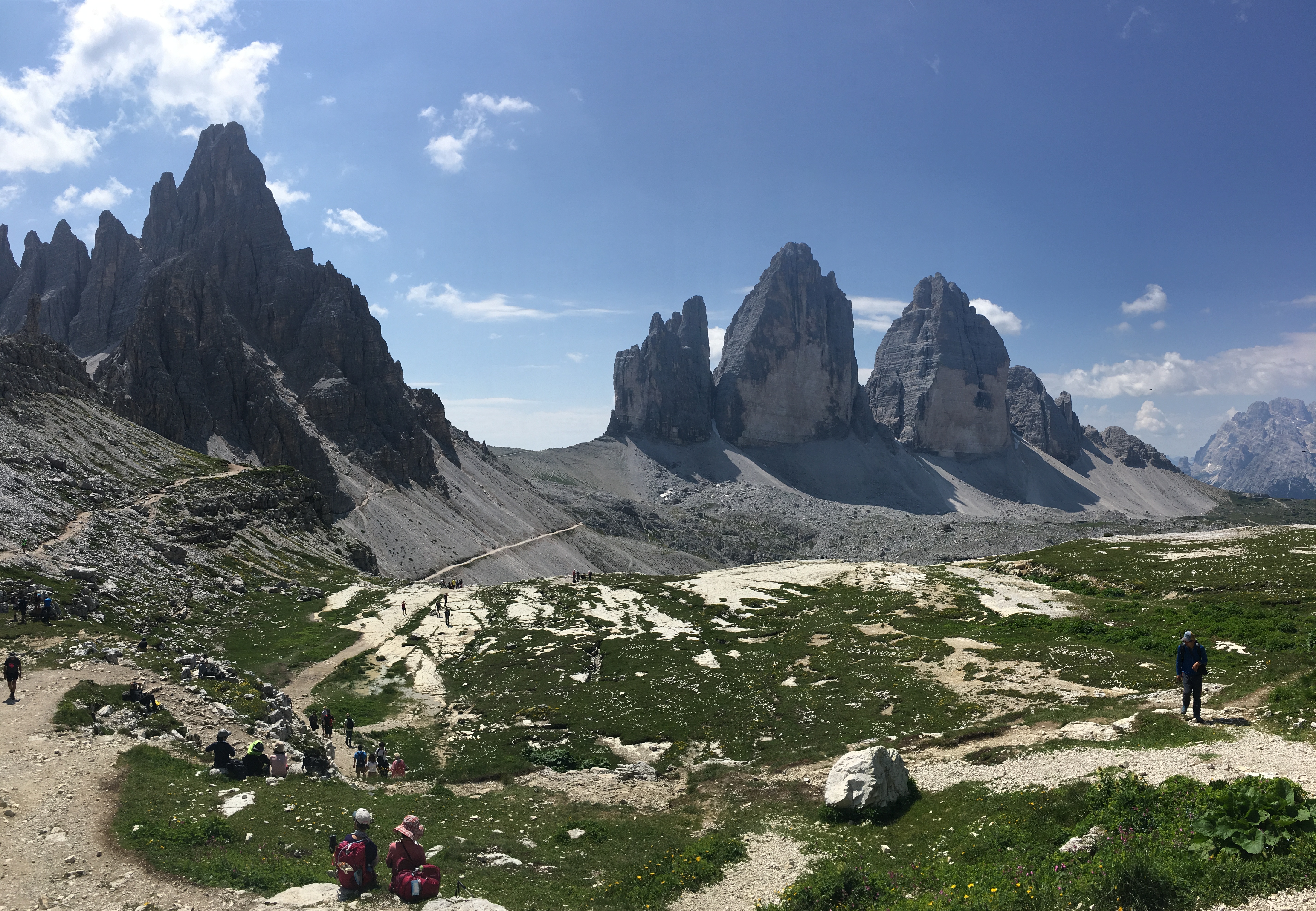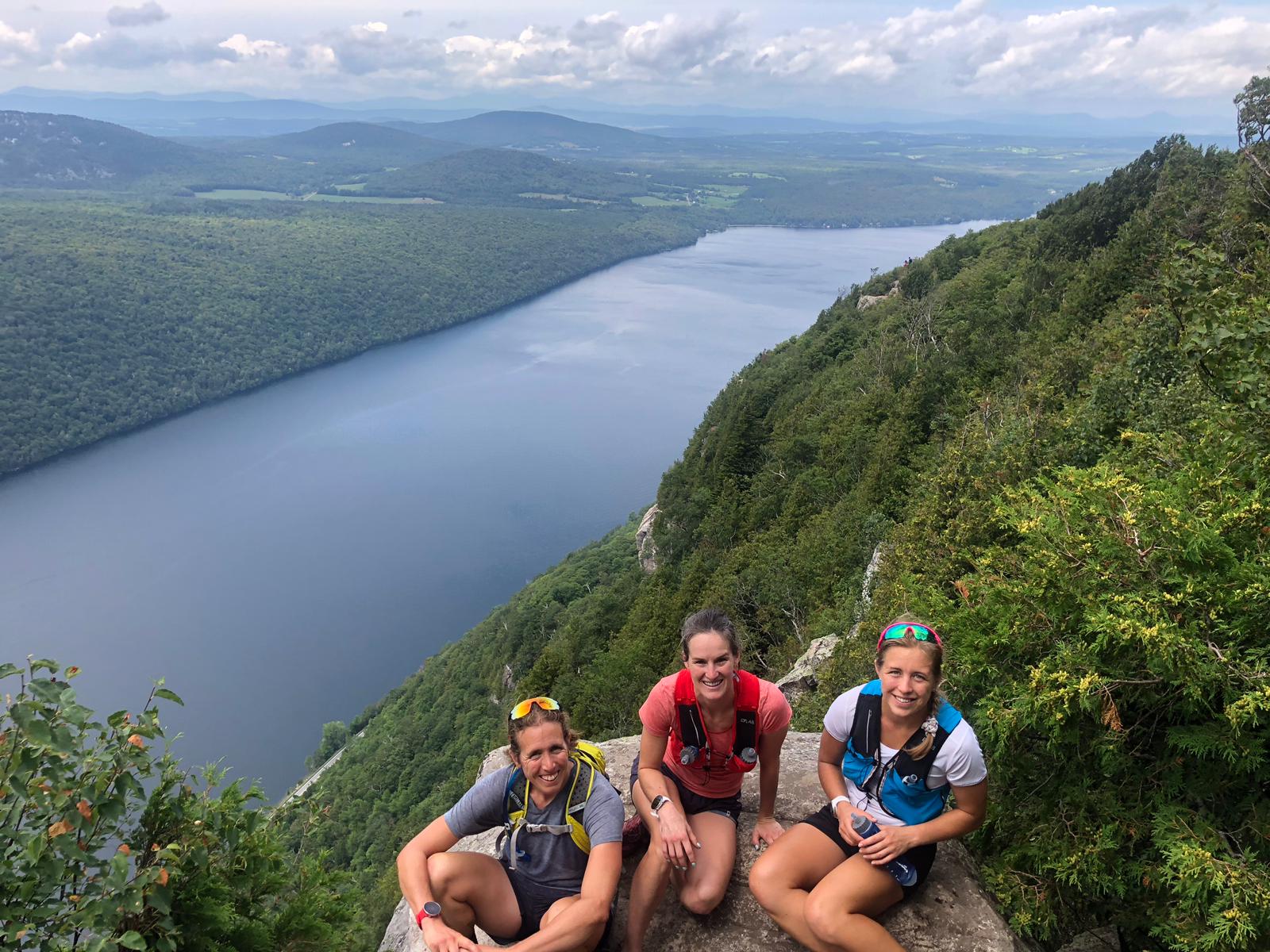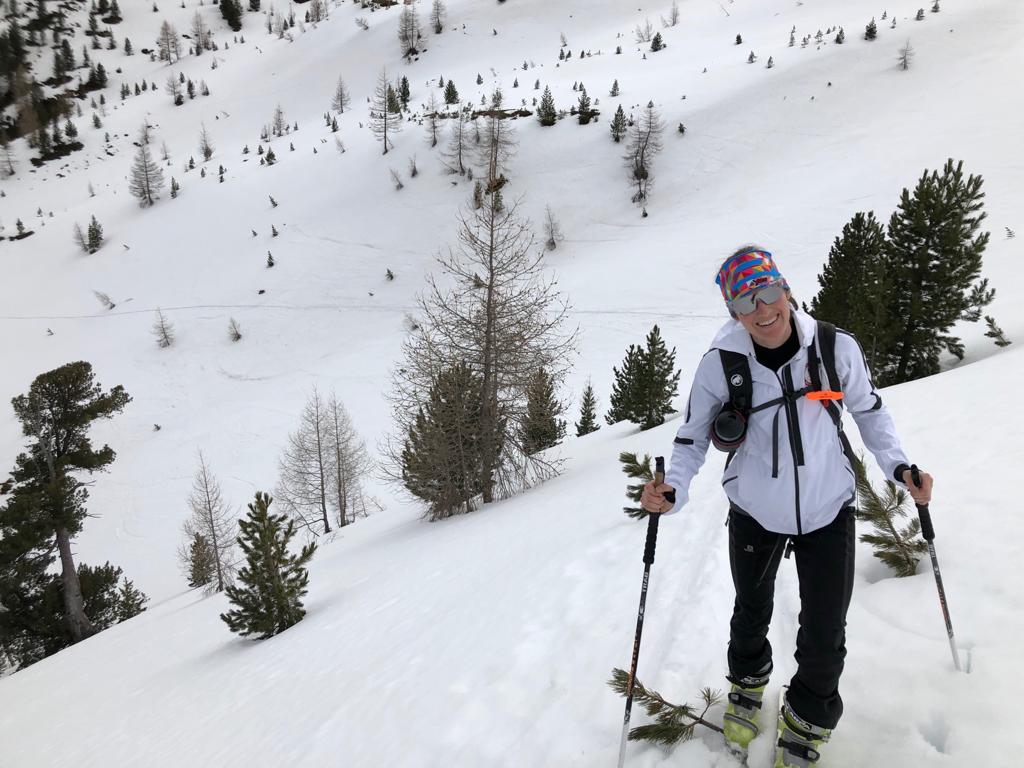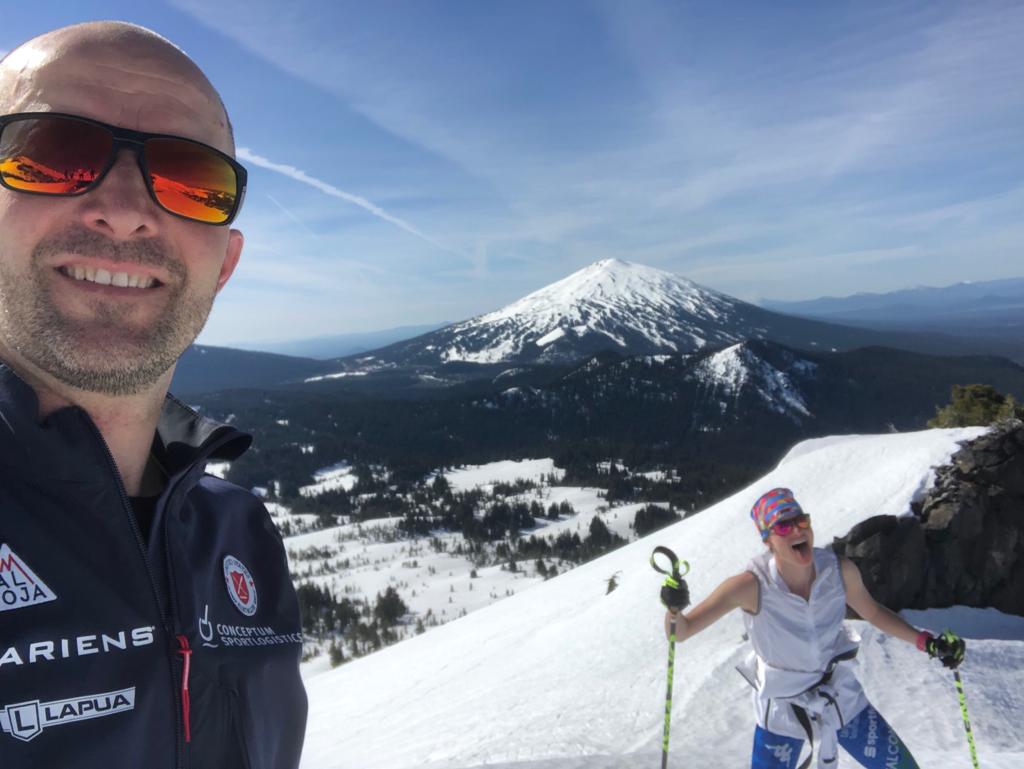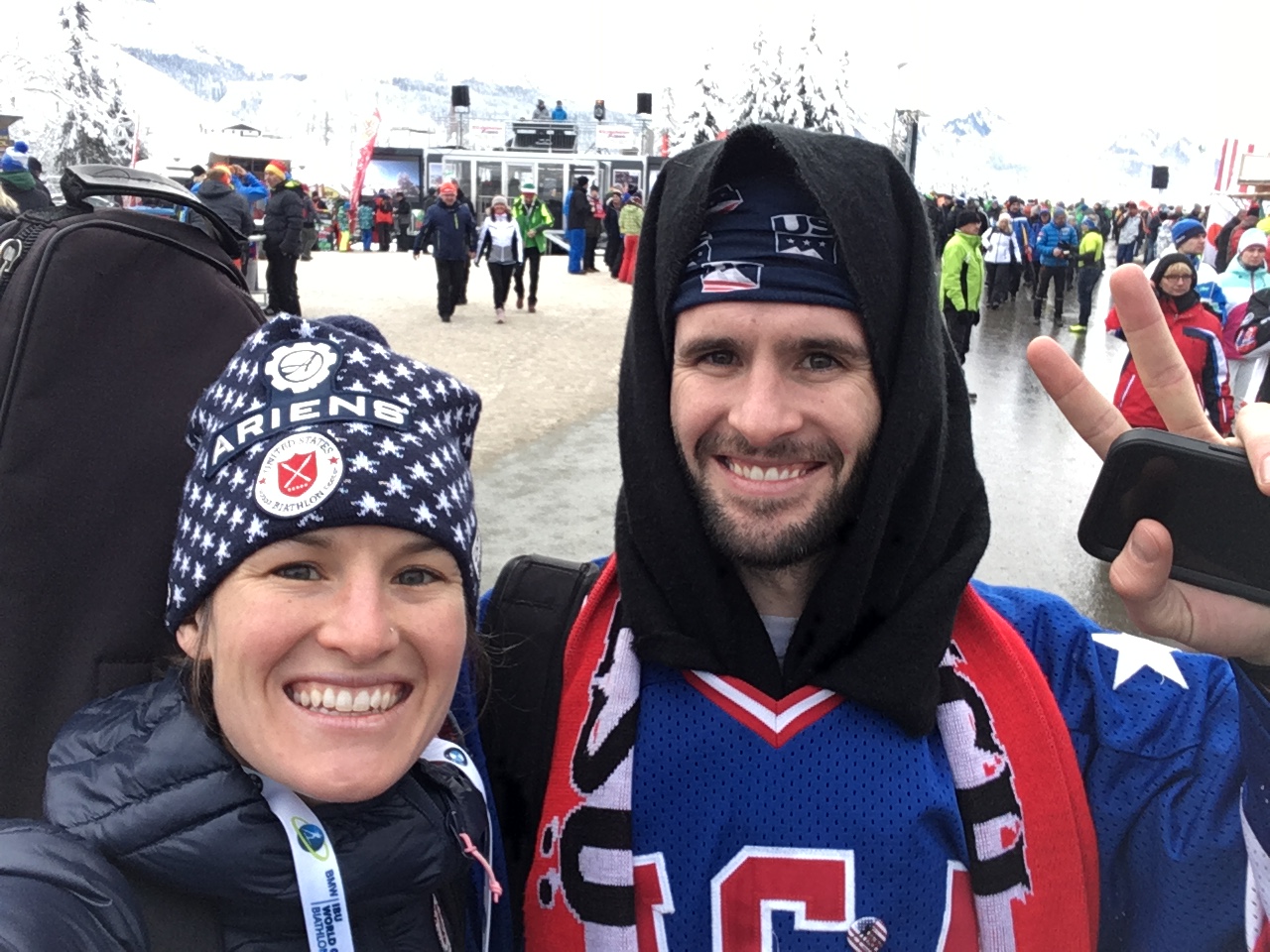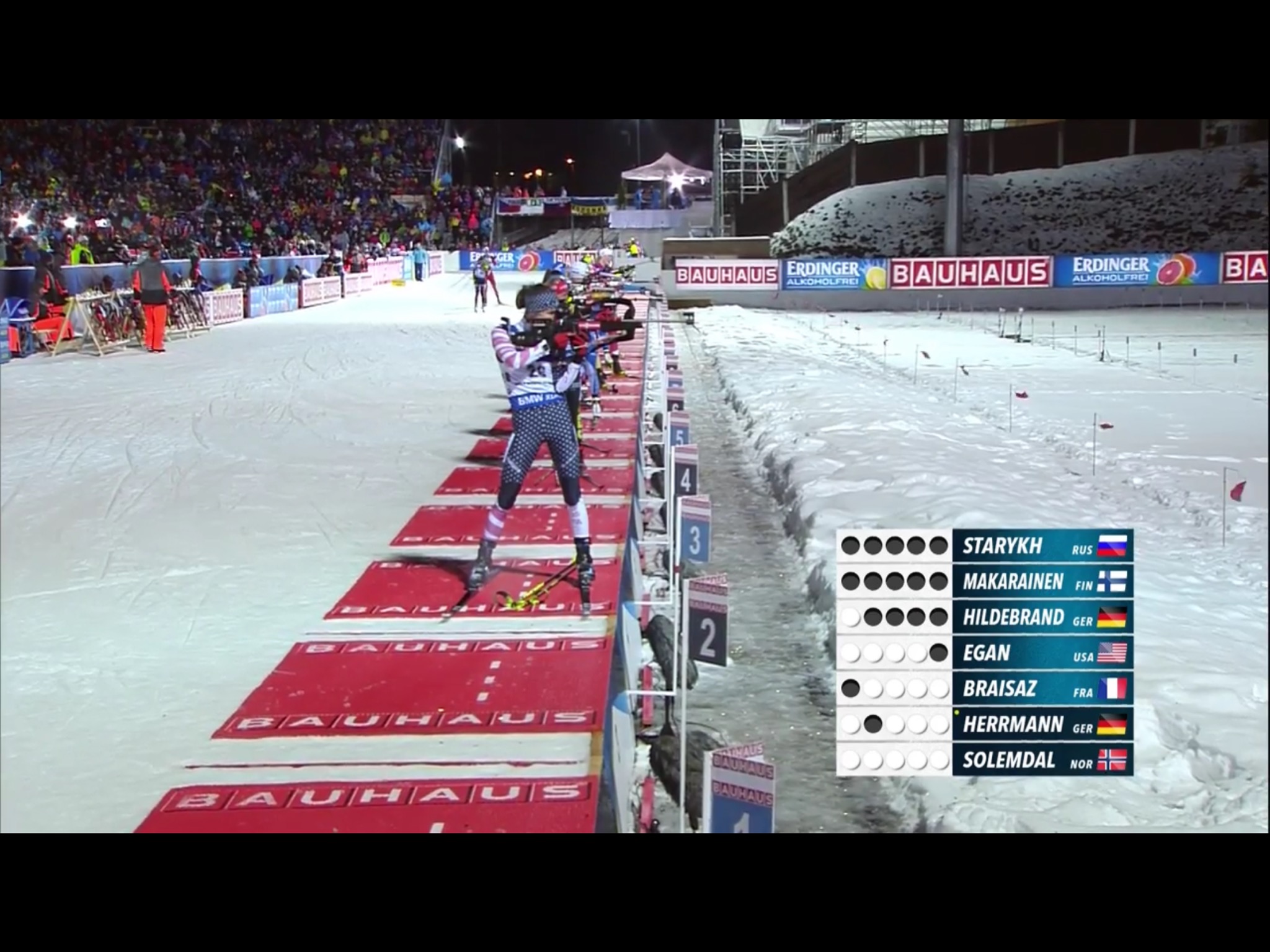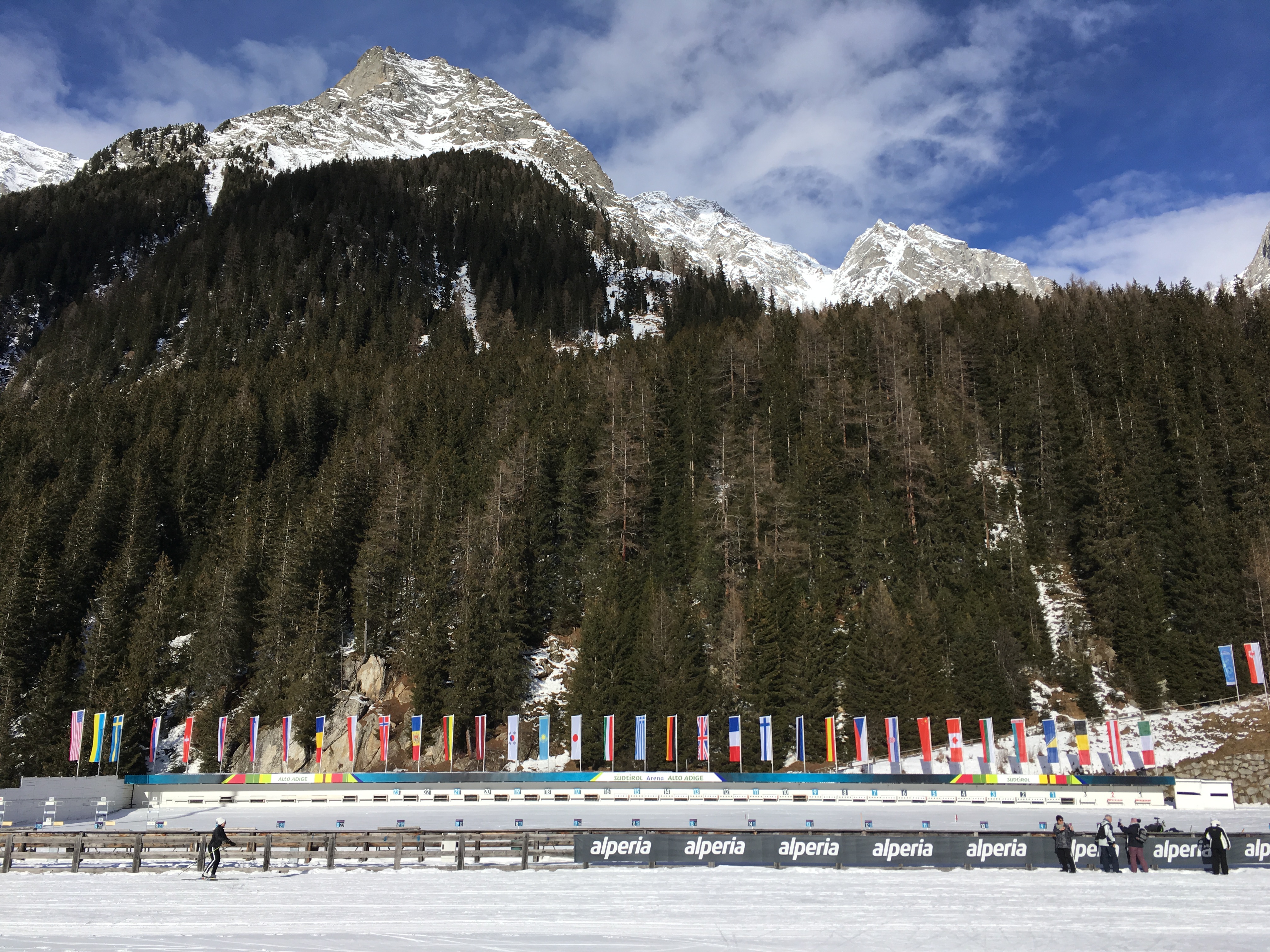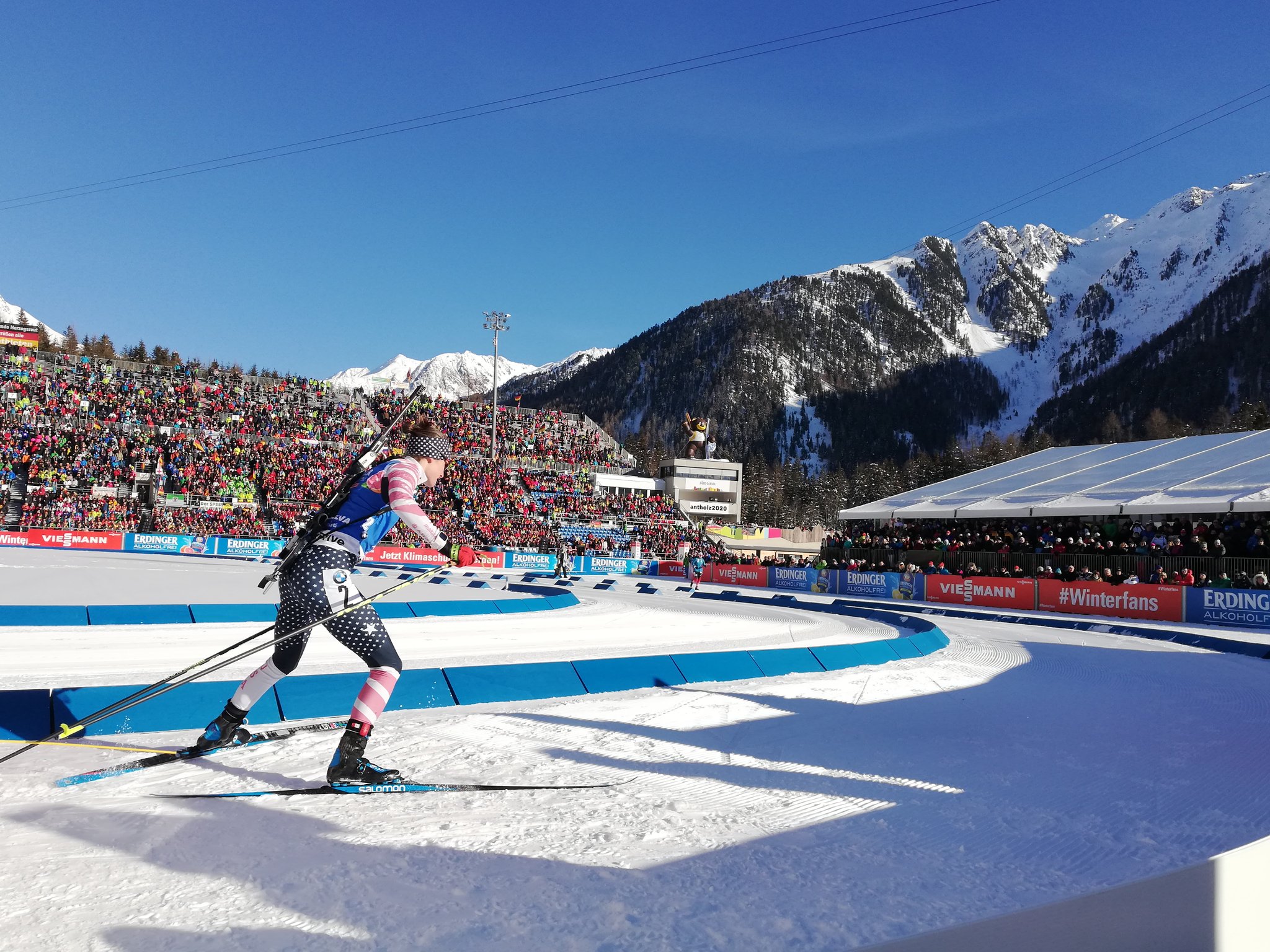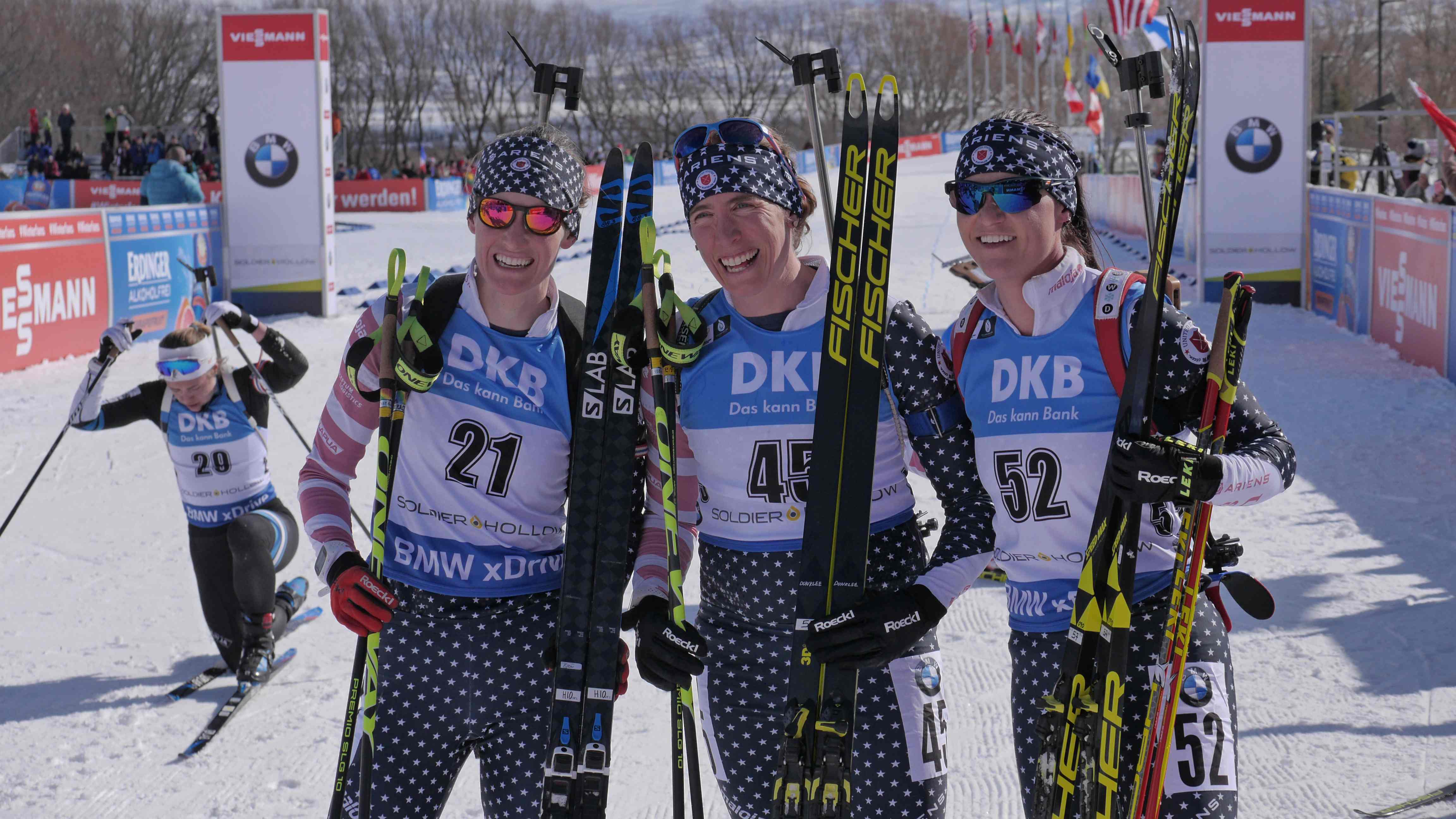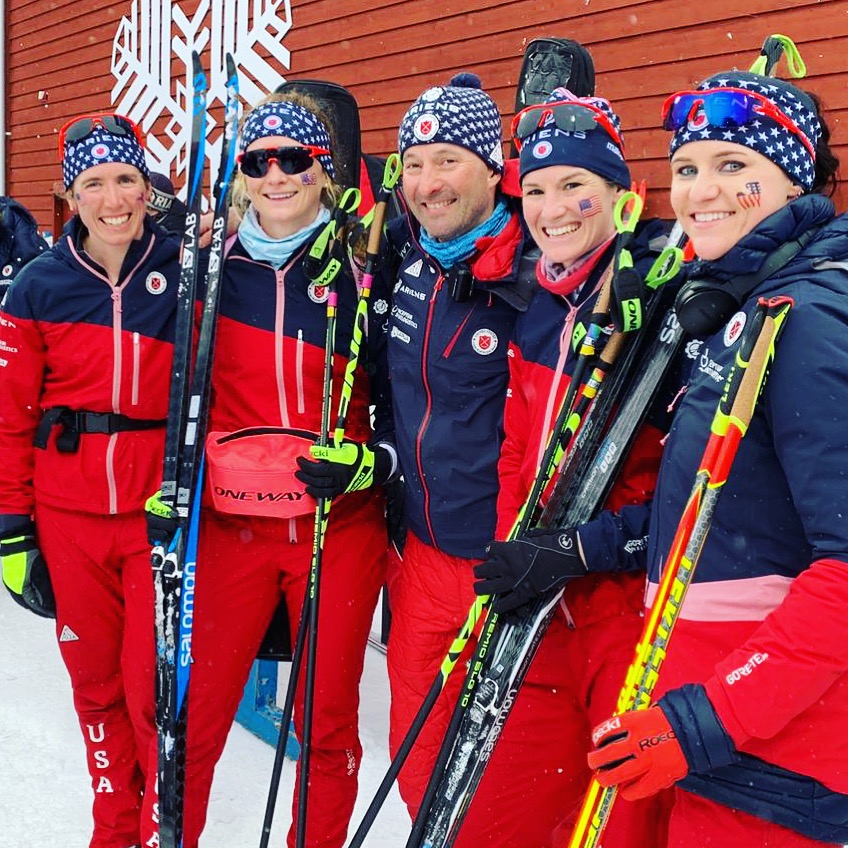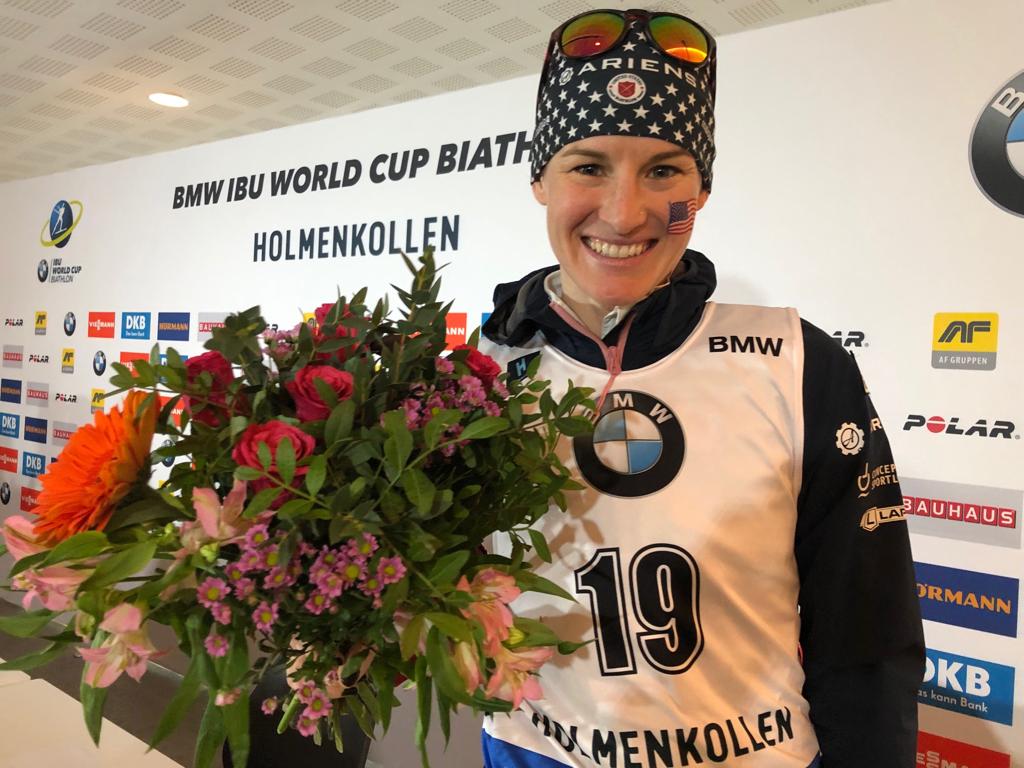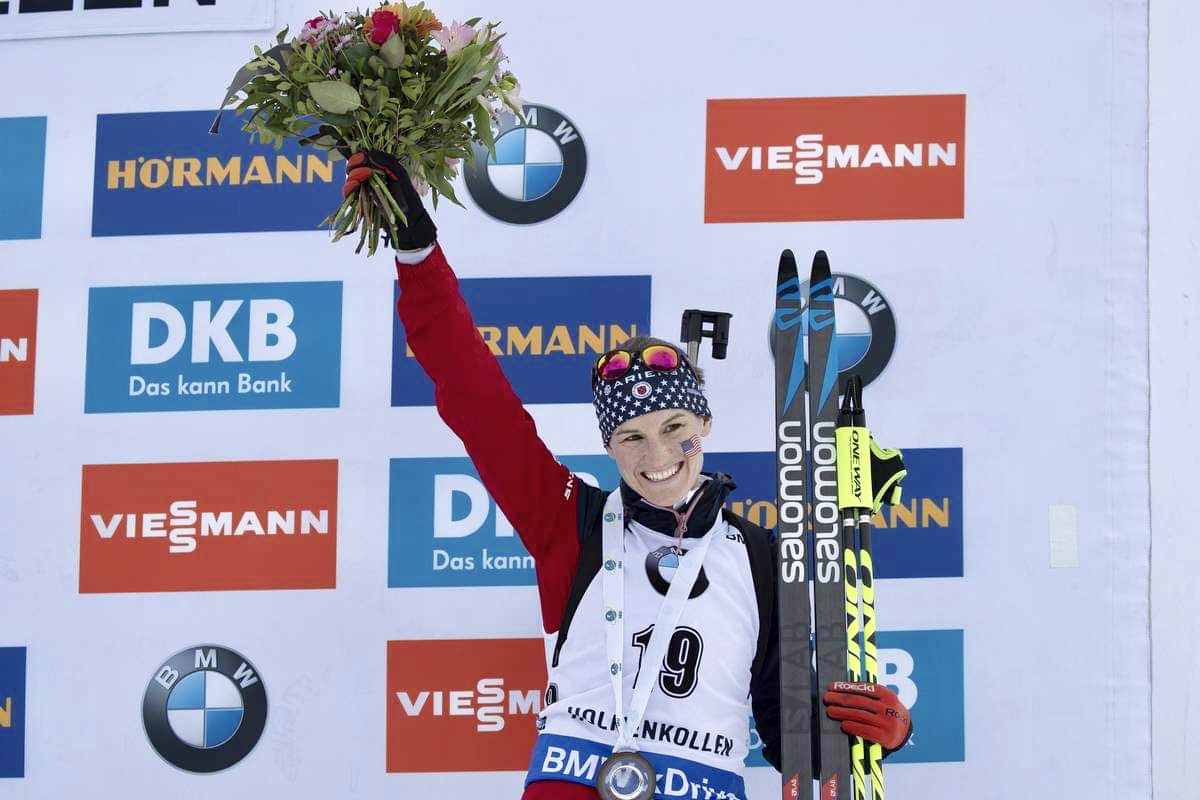After the Individual race did not go as I had hoped, I put a lot of pressure on myself to perform well in the Sprint. I was skiing fast so I knew that anything was possible. I was a bit shaken up by randomly missing three in prone in the Individual, but I felt confident in my standing shooting, because I hit 14/15 of my targets in the first two races. I went into the Sprint with high hopes.
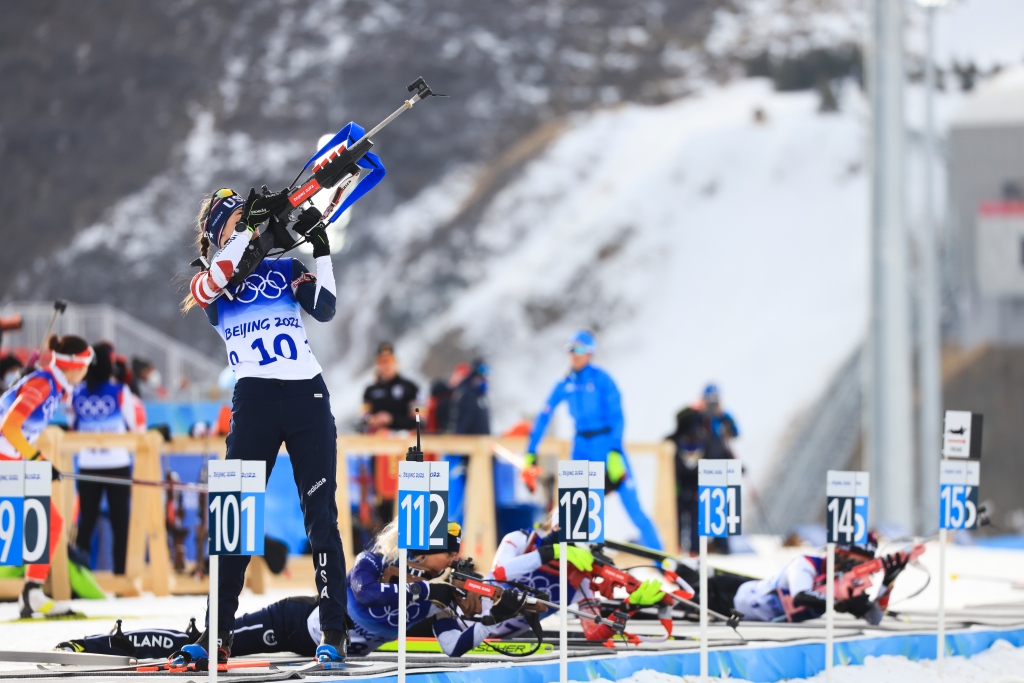
But the Sprint ended up being an absolute nightmare– the kind that makes you beg to wake up. Much to my dismay the nightmare was real and there was no waking up, just facing the reality that I repeated my performance from the Pyeongchang Olympics Sprint– the same bad shooting, major crash, and everything! This time I even broke my rifle.

I missed one in prone but kept fighting, knowing I could still shoot well in standing and have a great race. But then I missed my last two shots in standing. Without any time to sulk or analyze, I skied my two penalty laps and raced towards the finish, believing I might still have a chance to qualify in the top 60 for the Pursuit, and knowing that fighting to the line is the one thing you can always be proud of even when nothing else goes your way.


The last kilometer of the course in Beijing featured a one-minute-long uphill with a harsh headwind, followed by a long, sweeping downhill curve which propelled athletes into a gradual uphill finish corridor at high speed. I gave it my all on the last uphill, knowing that I would basically glide from there to the finish. But soon after cresting the hill and feeling the relief of settling into my downhill tuck, I caught an edge and wiped out, sliding down most of the hill to a stop at the very bottom. What should have been 30 seconds of resting in a tuck followed by 10 seconds of sprinting at high speed ended up being 5 seconds of resting followed by 45 seconds of “sprinting” from a stand-still at the bottom of the hill to the finish line. With no gas left in the tank, it felt so long and hard. When I crossed the finish line and saw that I was more than two and half minutes back, I thought for sure I would miss the pursuit again, like I had at the 2018 Olympics in Pyeongchang, where I finished 61st by less than one second.

As I cooled down, I wondered where everything had gone so wrong (a question I don’t think I’ll ever be able to answer). The 1-2-crash playbook from the 2018 Olympics Sprint was not something I ever expected to relive. To put things in perspective, the last time I crashed like I did in the Sprint in Beijing was four years ago in the Sprint in Pyeongchang. When I finally went to check the results, I found myself hoping that I would be way out of the Pursuit, so at least I wouldn’t have to experience the sting of finishing 61st again. It turned out that due to the altitude and windy range, the time gaps were huge and so even being more than two minutes back I finished 46th. Without the crash I would have been in the early 30’s. I was glad to have a chance at my first Olympics Pursuit, but at that point I knew my hopes for a good individual result were over.
It wasn’t until after the race that I noticed the butt of my rifle stock was broken in two pieces from the impact of falling. I am so lucky that my coach brought some spare parts for my modular stock, and was simply able to switch out my broken butt plate for a new one!!!
So… what happened after that? I took a long, hot shower. (The water, though non-potable, odorous, and gray in color, was hot and there was good water pressure.) I had two more races and I needed to turn around and get ready for them. My sports psychologist proved more critical than ever. But I was not in a good place so basic things were difficult.

I just tried to put one foot in front of the other. I worked hard to get enough food and water, to stay warm both outside and inside my drafty apartment, and to maintain a stable level of mental health.
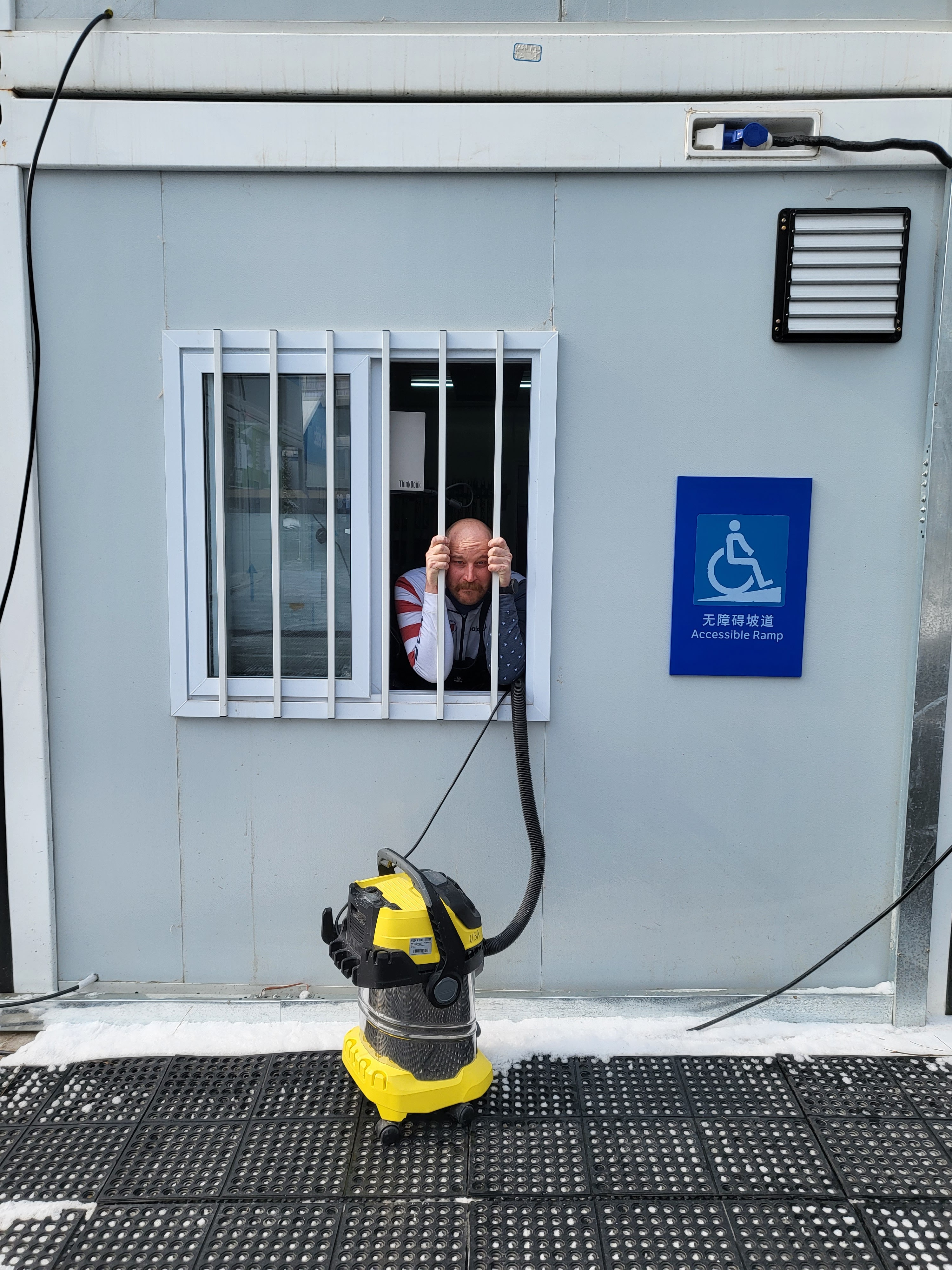
The nutrition was a major challenge. Every morning I ate microwaveable Annie’s macaroni and cheese plus a microwaveable Kodiak Cakes chocolate muffin. For lunch I ate a dehydrated camping meal. THANK GOD the US Olympic Committee shipped this food over ahead of time. For dinner I ventured to the dining hall and alternated between a KFC fried chicken sandwich with fries and a side salad, or a plate of rice, cucumbers, smoked salmon, and soy sauce with a side of cabbage with chili peppers. I should mention that this food was ok and I did have the option of eating it three meals a day but I was having a hard time doing that (especially before training or competition) which is why I stuck to the pre-packaged food options. The smoked salmon and soy sauce also only showed up during the third week. I did enjoy the steamed buns with bean paste.

I did ok in the pursuit, moving up from 46th to 38th or something like that. I shot 0,0,2,2. My shooting in the women’s relay was a disaster; I missed in prone and had a penalty loop in standing, though I continued to feel good skiing and moved the team up a couple of places. For both races, I managed to get myself to the starting line with a positive outlook and I fought hard to the finish. Those two things alone don’t get you good performances or results but without them you will for sure get neither.

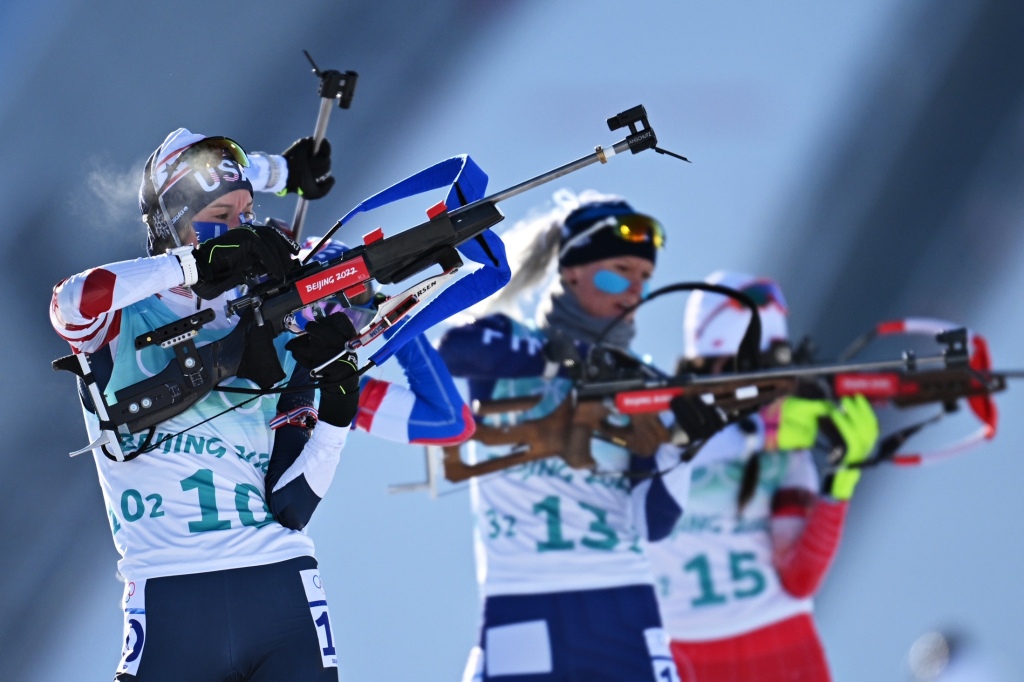


Finally, the racing was over. But I couldn’t leave China for another five days, as my charter departure flight was not changeable. So I made the most of my time there by doing quite a bit of training, with my eyes on the three remaining World Cups of the season. One of my best workouts was 4×10 minutes at anaerobic threshold pace with my former Craftsbury Green Racing Project teammate, Caitlin Patterson. She had a very difficult Olympics because she was selected as part of the US cross-country ski team but then was not offered any race starts. (Squandering opportunities like I did is very painful, but not having them in the first place is worse.) I also went for a long ski at the cross-country racing venue, which abutted the actual GREAT WALL OF CHINA. And I attended several IBU functions, which was a welcome opportunity to leave the village and see a new set of faces. And finally I cheered for the athletes in the mass start races, which was inspiring but bittersweet because I so wished to have qualified myself.


On our second to last night, it was discovered that the Canadians had a bottomless supply of Molson Ice, thanks to a sponsorship agreement. I am not a big beer drinker but after three weeks in China, I was not saying no to a free Molson. My Canadian biathlon friends were probably the biggest bright spot in my Olympic experience. I ate most of my meals with them and they were a constant source of laughter. Their men’s team had an outstanding Games, which was fun to watch, and Emma Lunder’s experience was more like mine, so we found support in each other’s company.
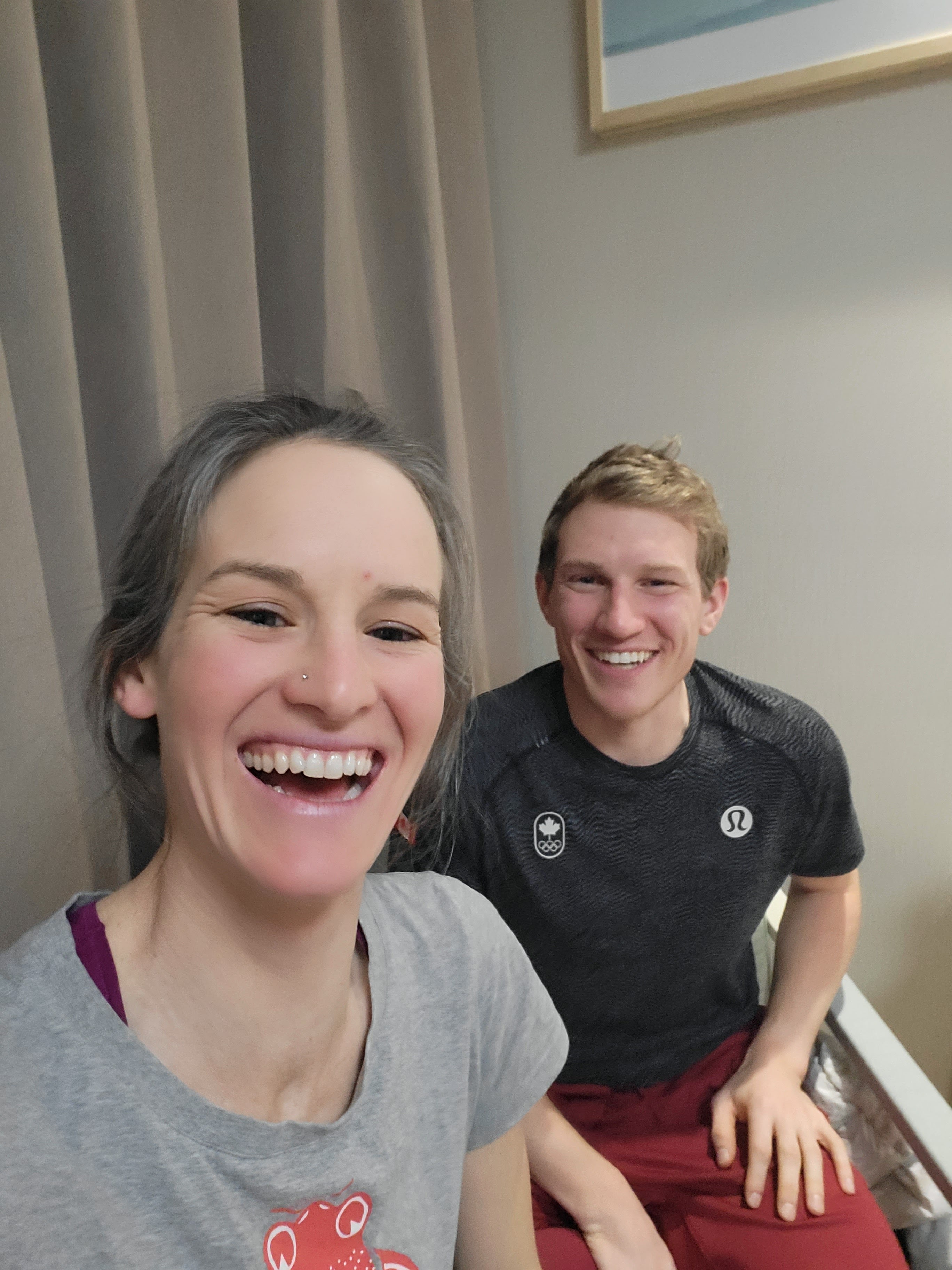
I attended the Closing Ceremonies before flying out, and for a fleeting moment as I stood in the middle of the Bird’s Nest, I was able to see before me all the things I have achieved rather than the few that I didn’t.


